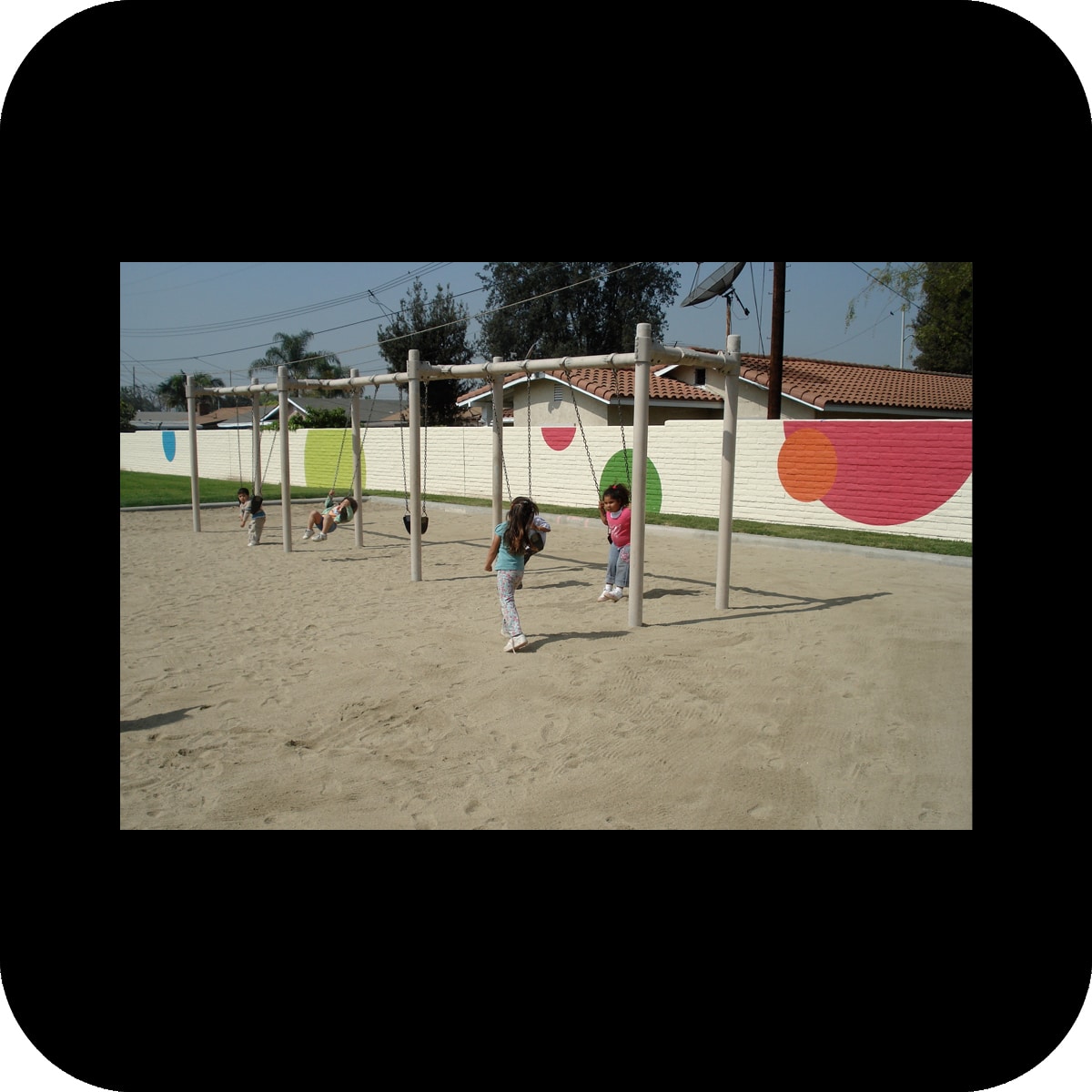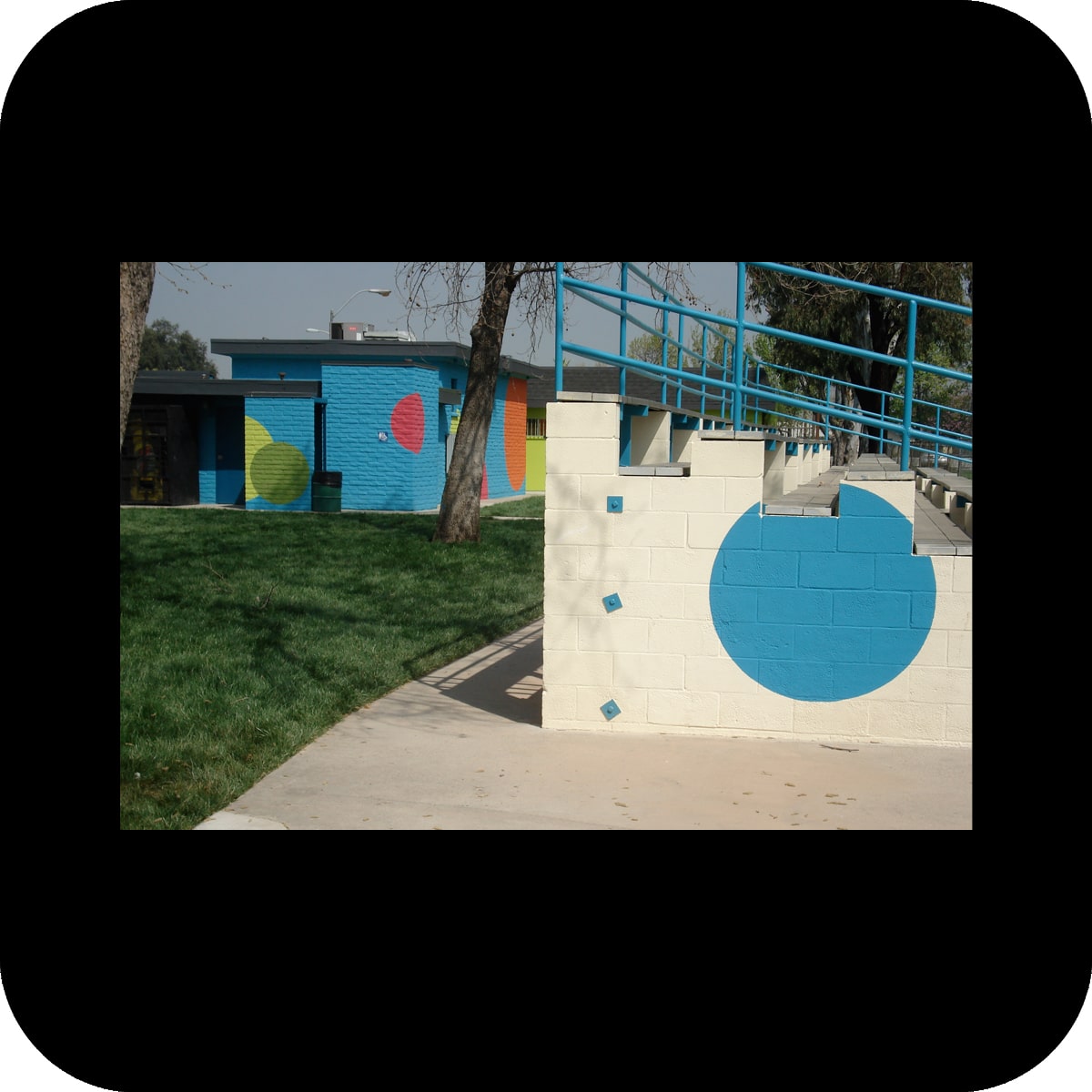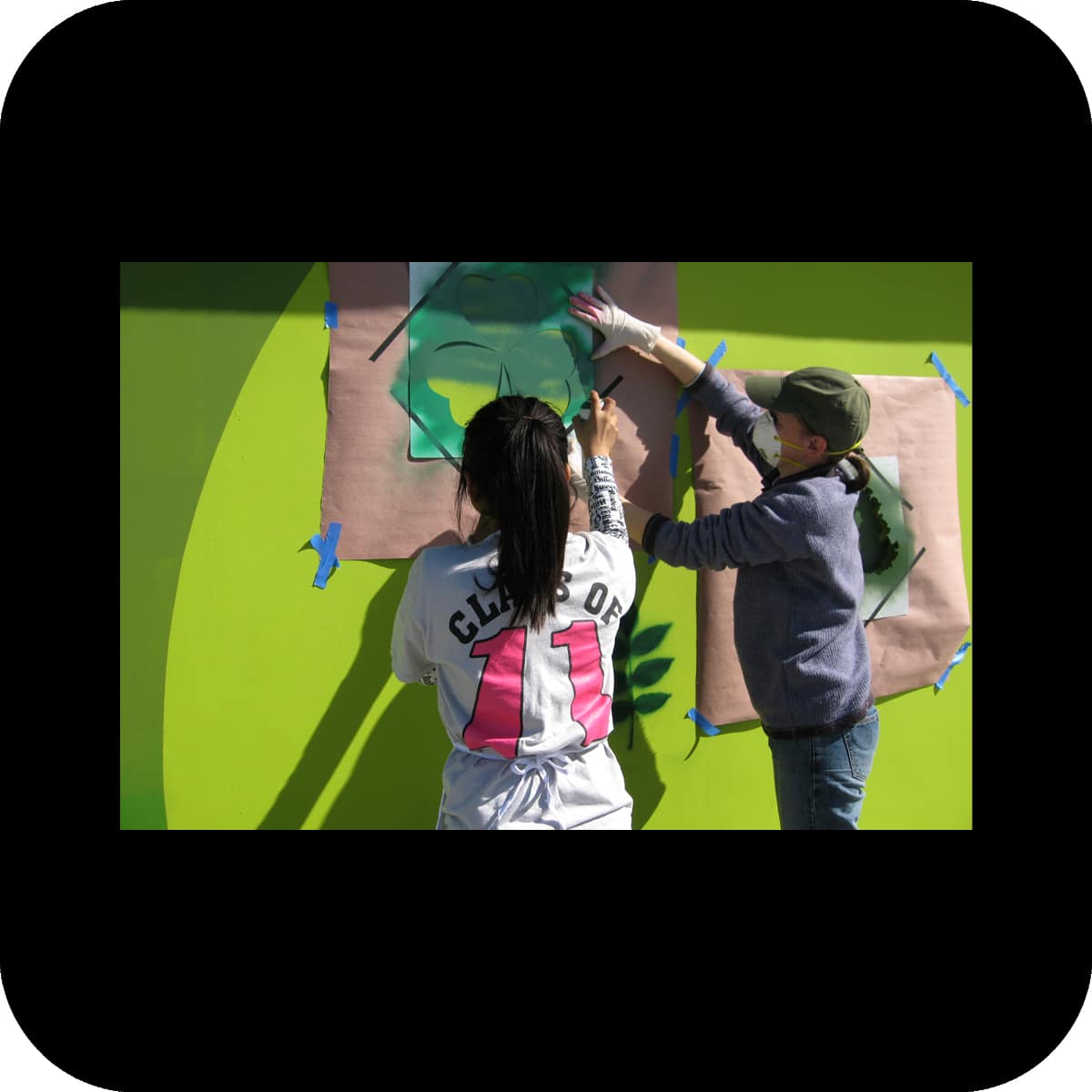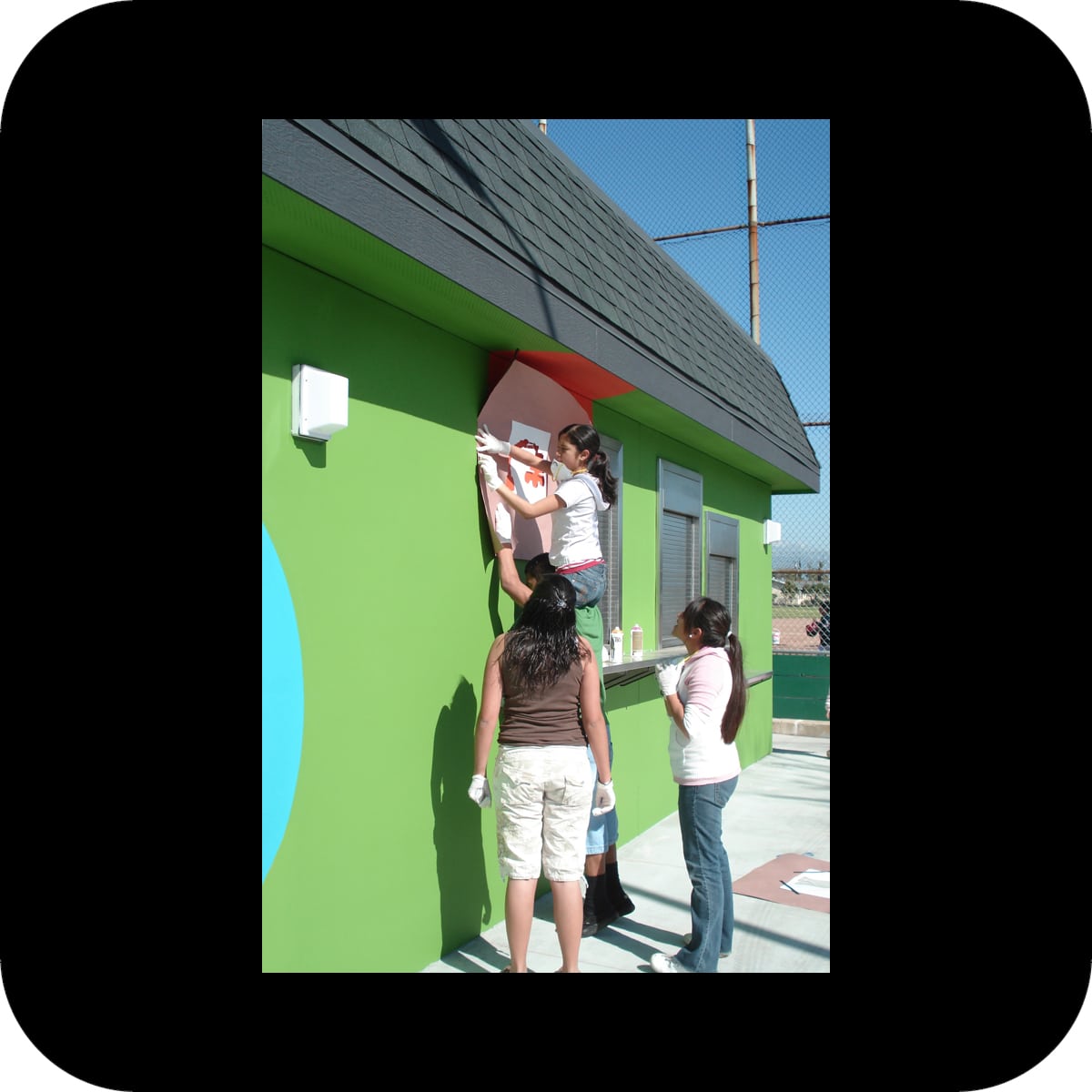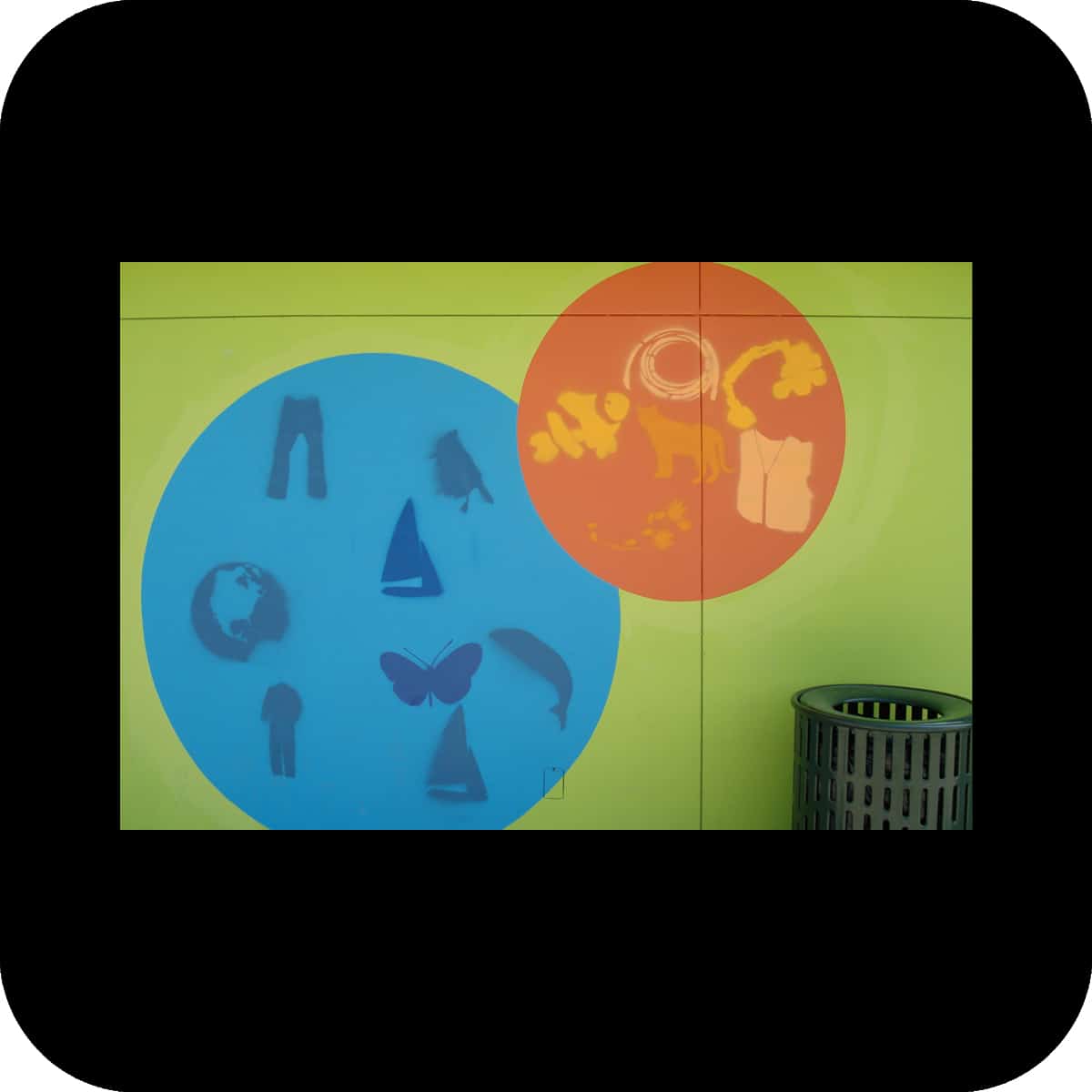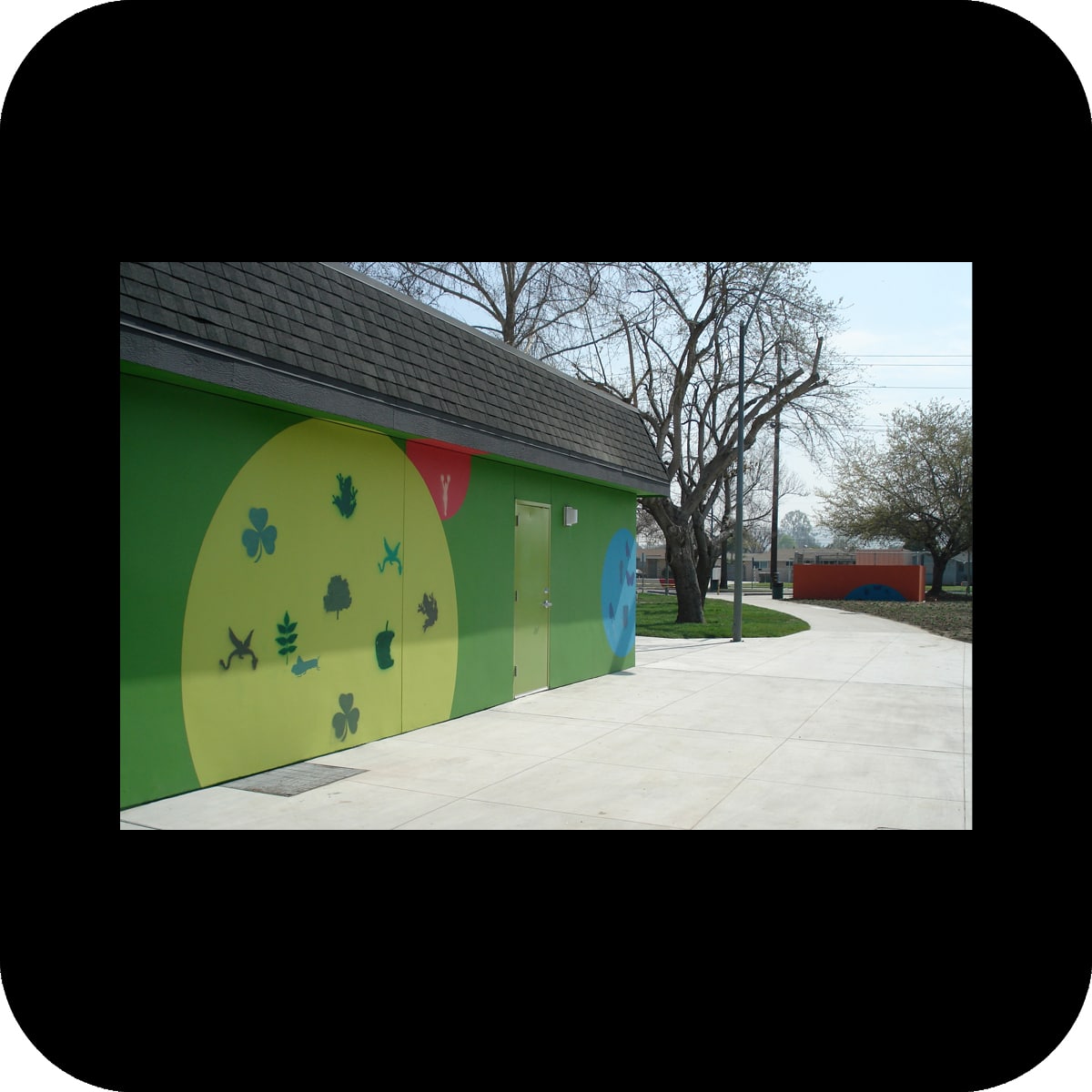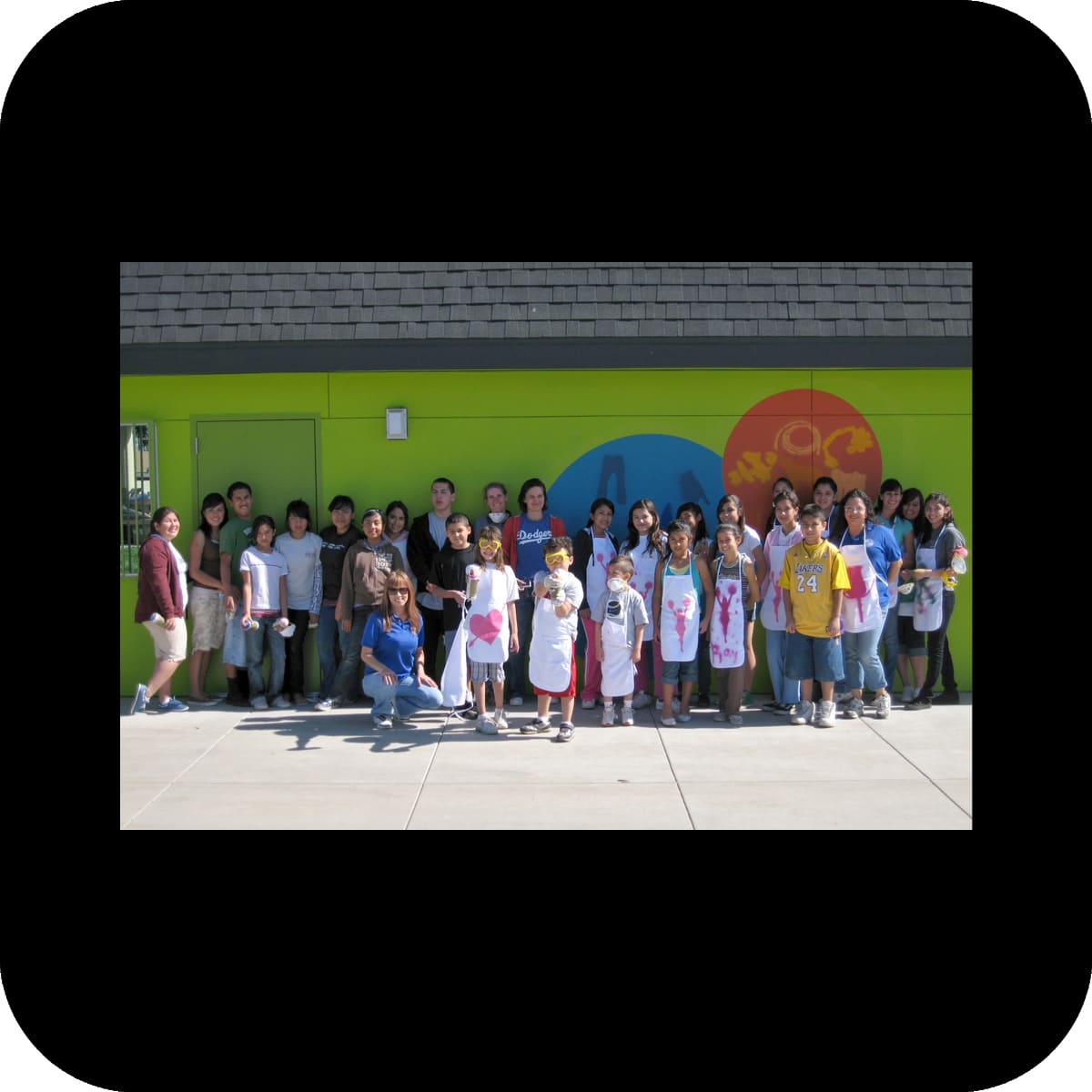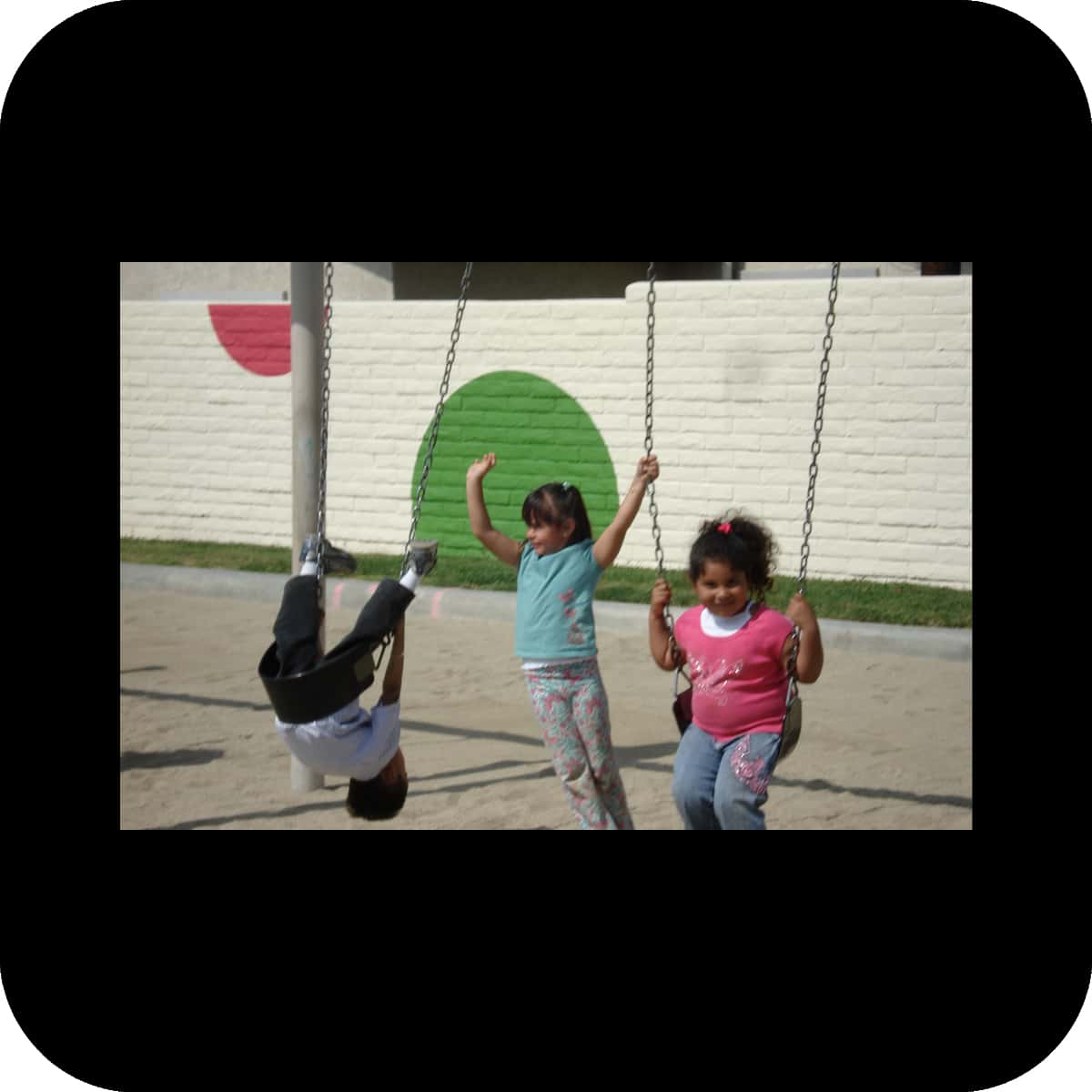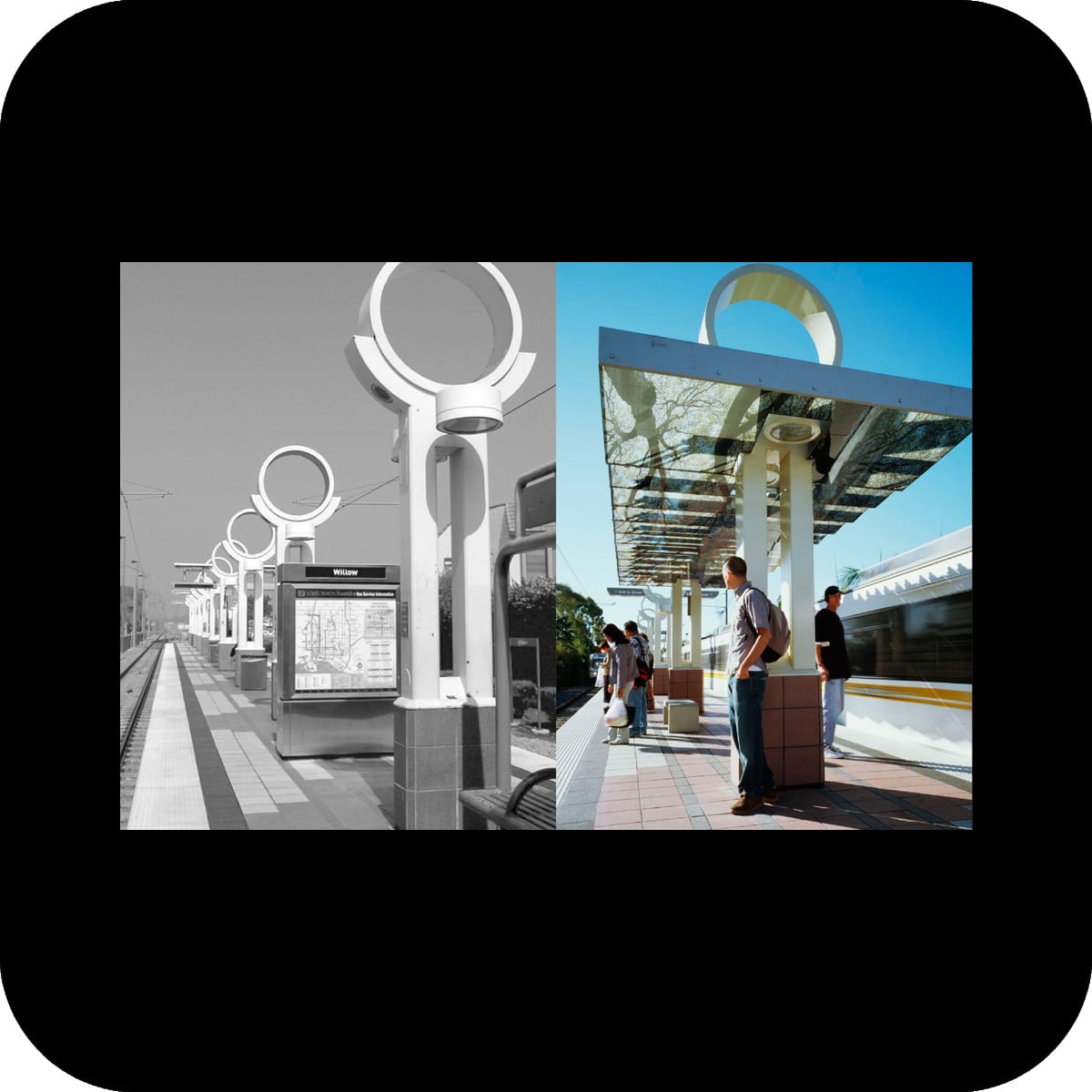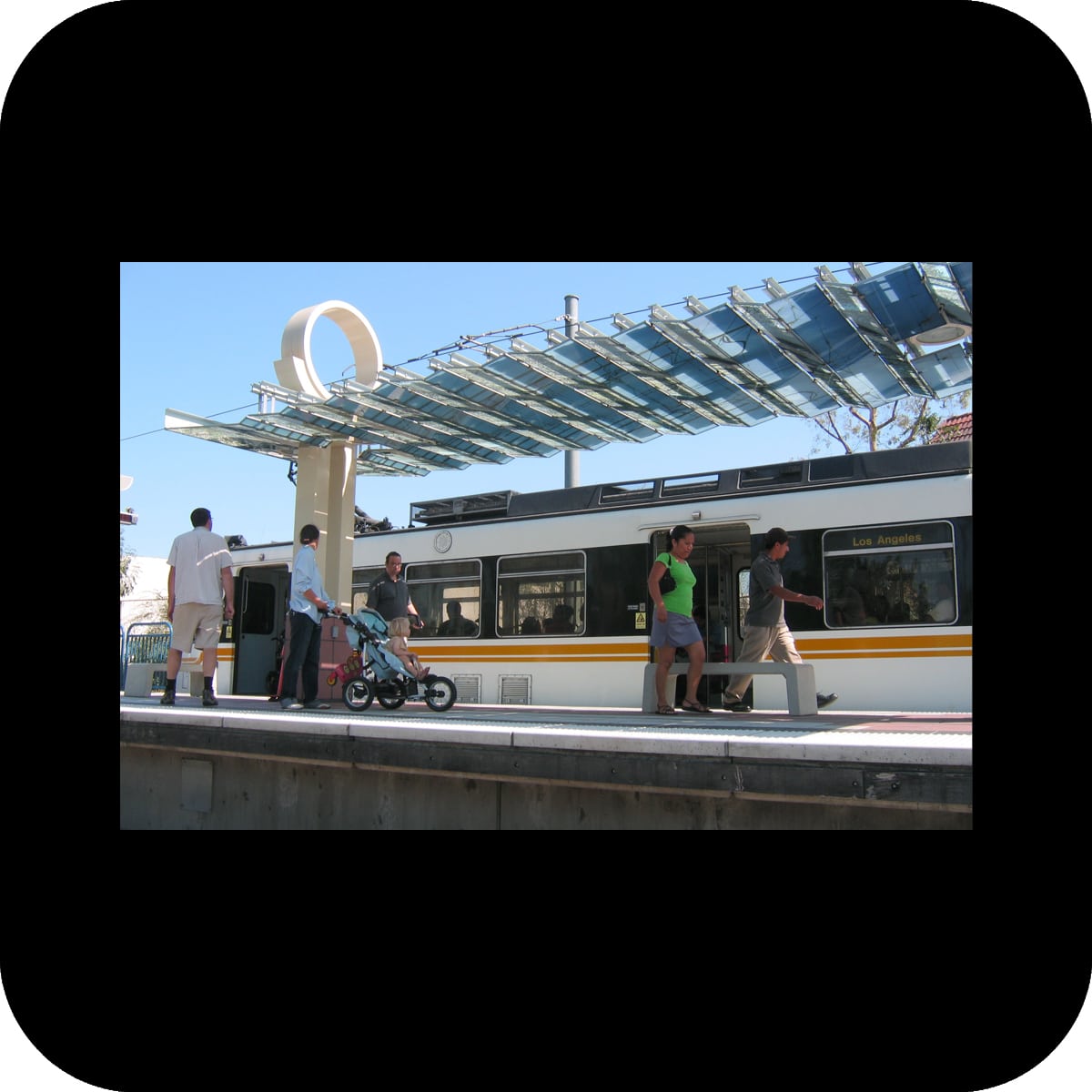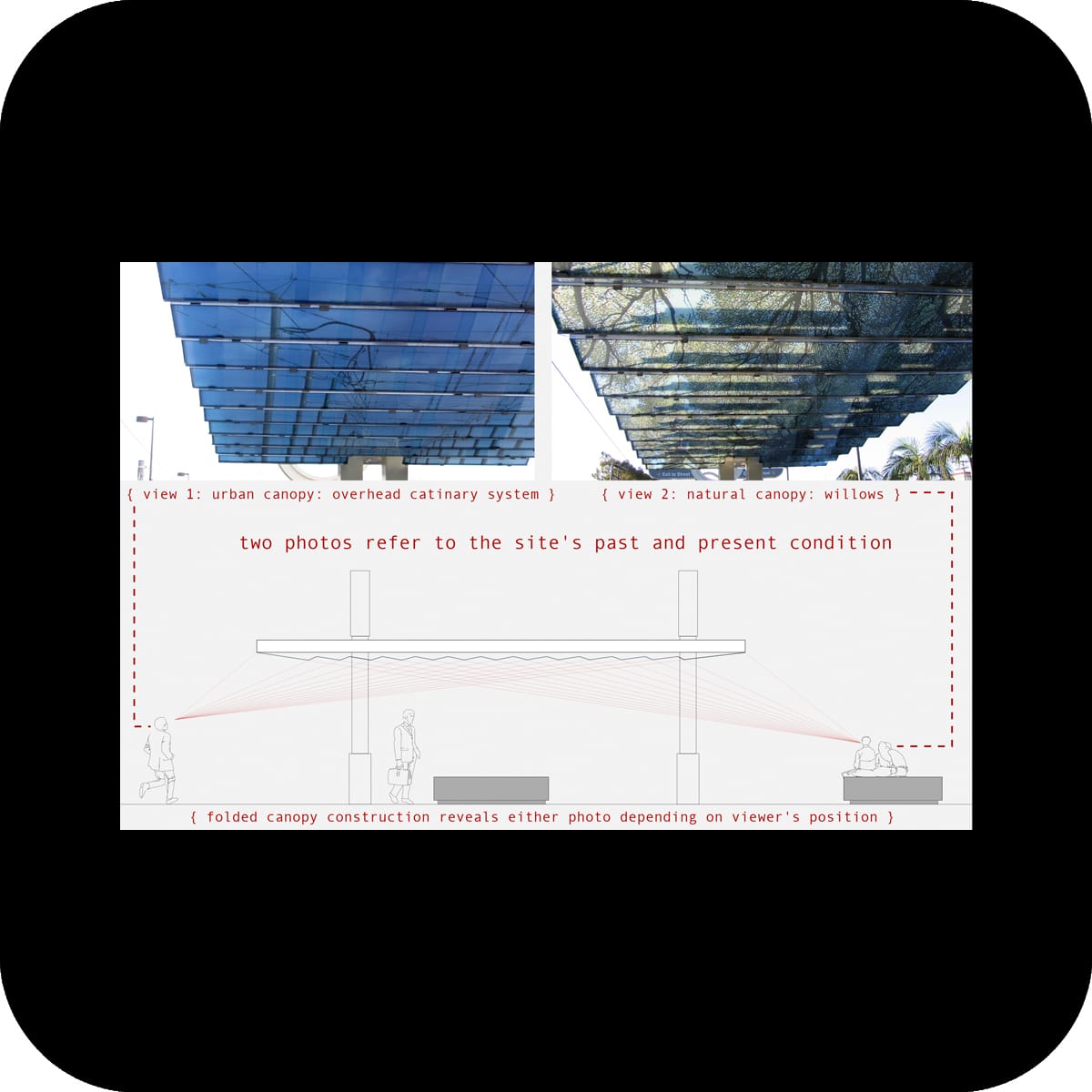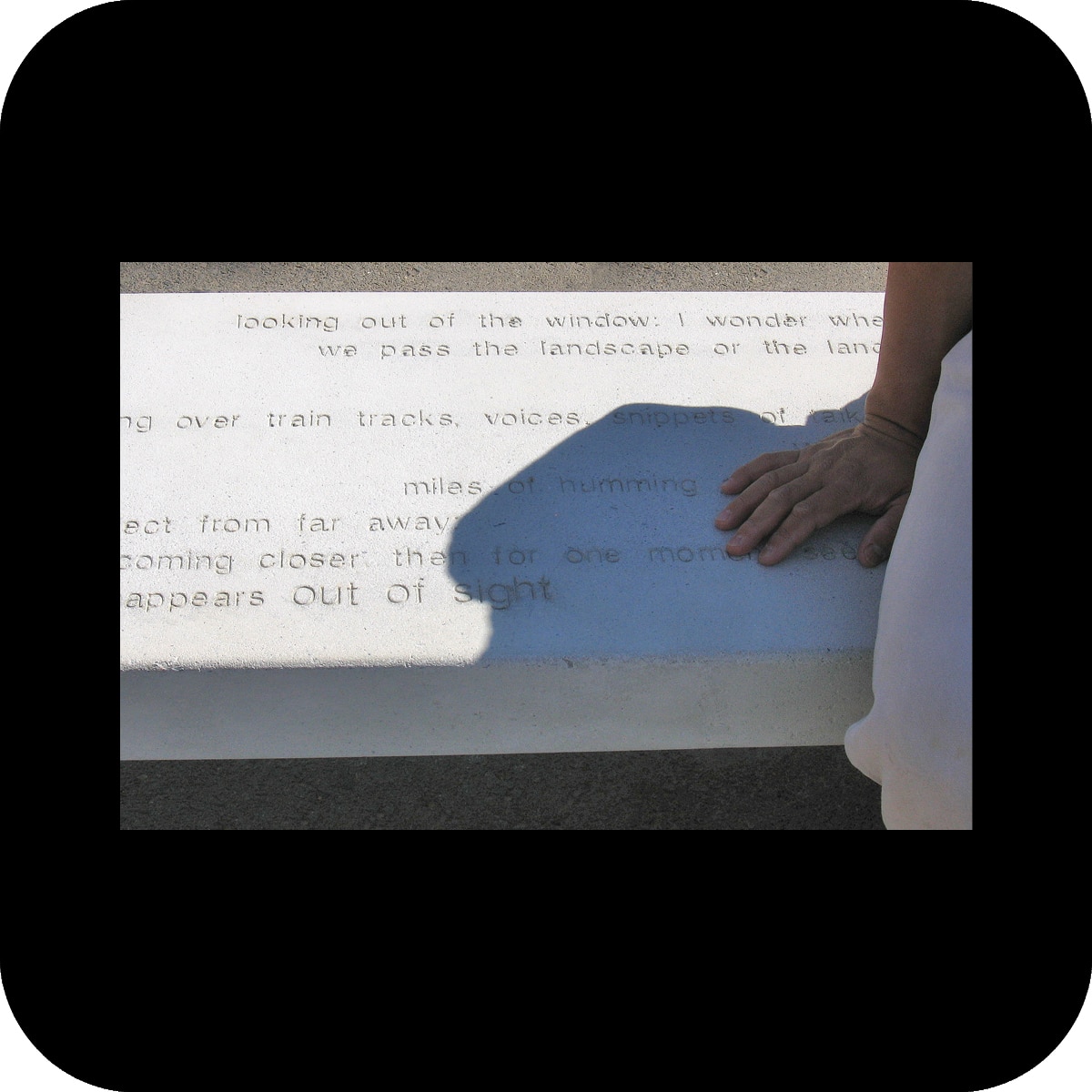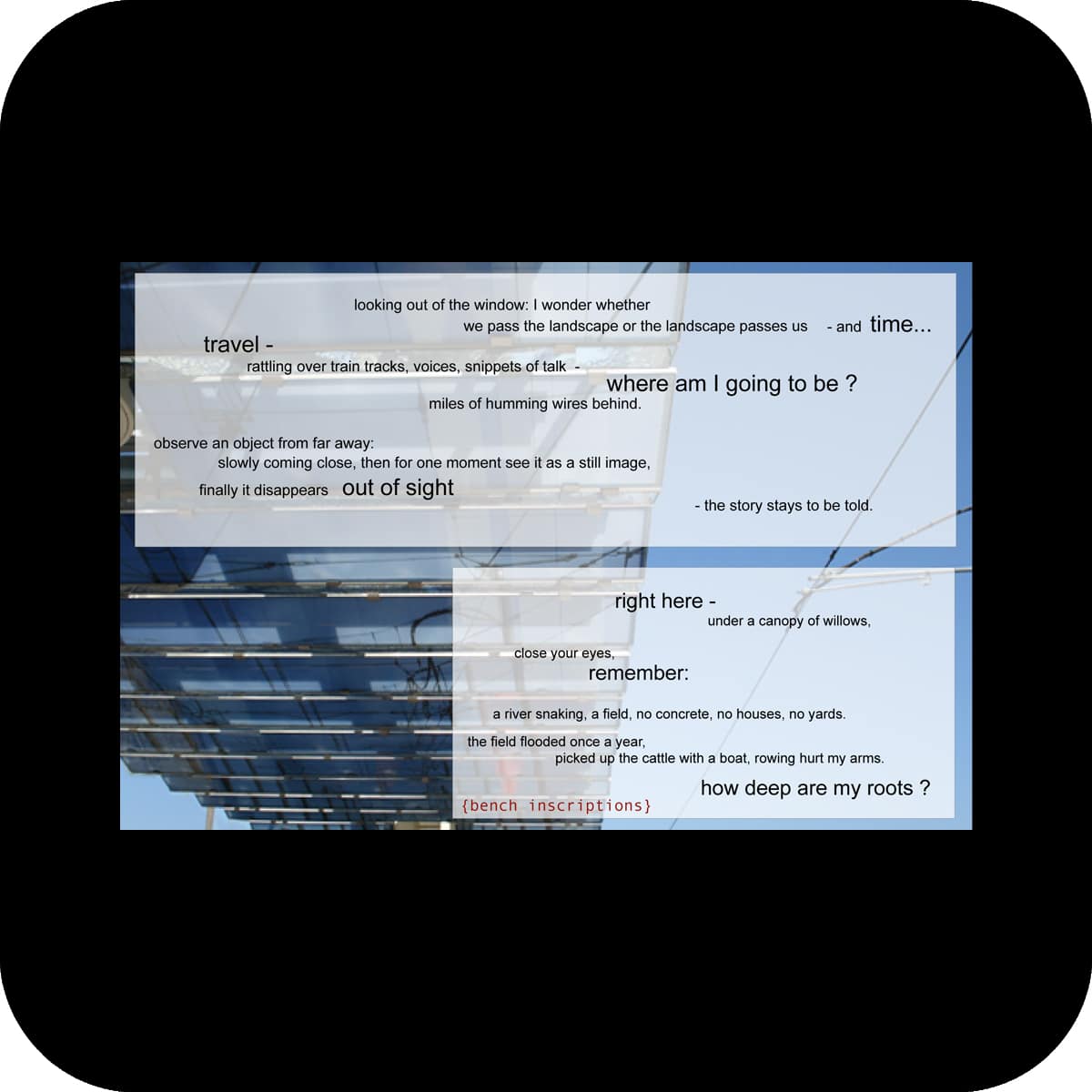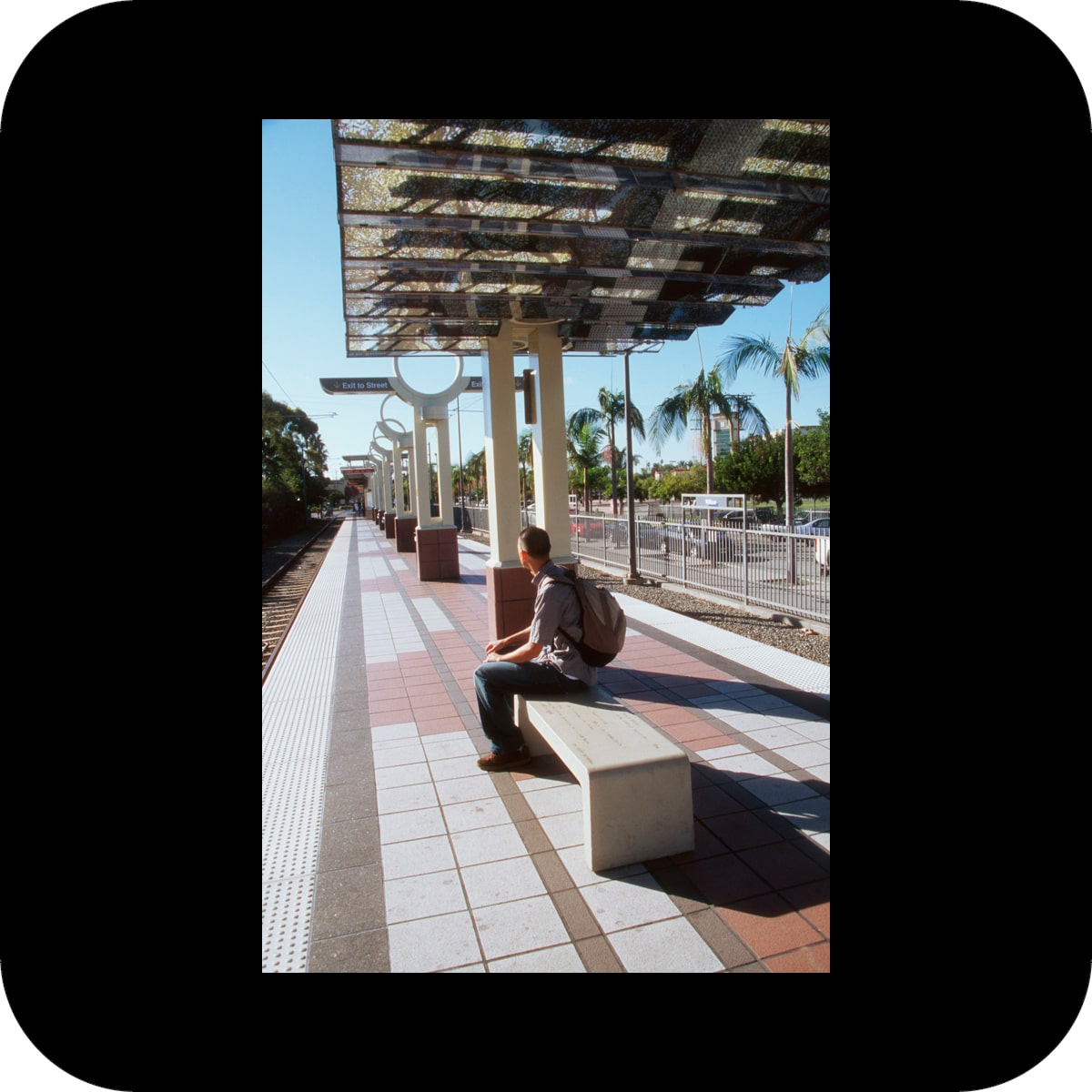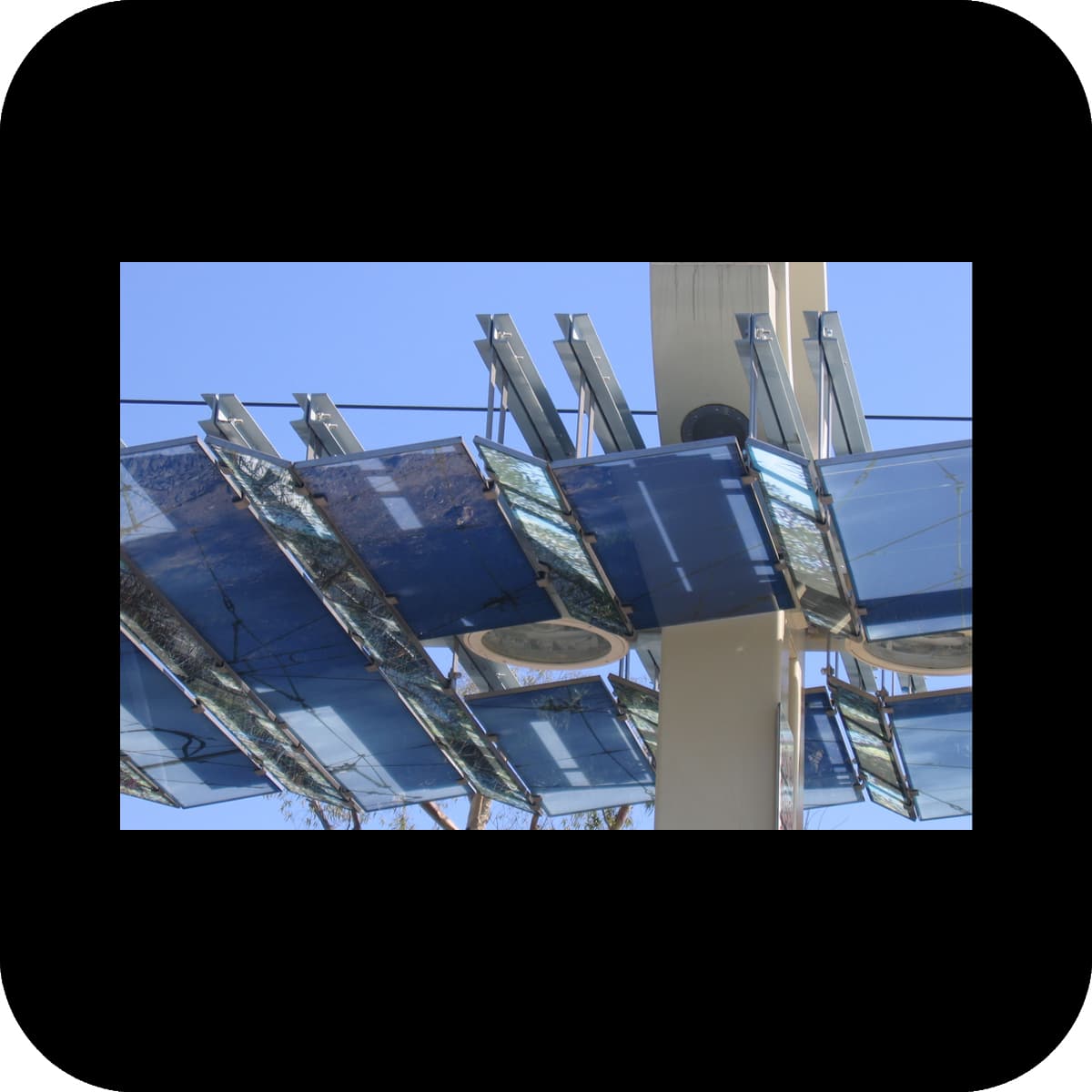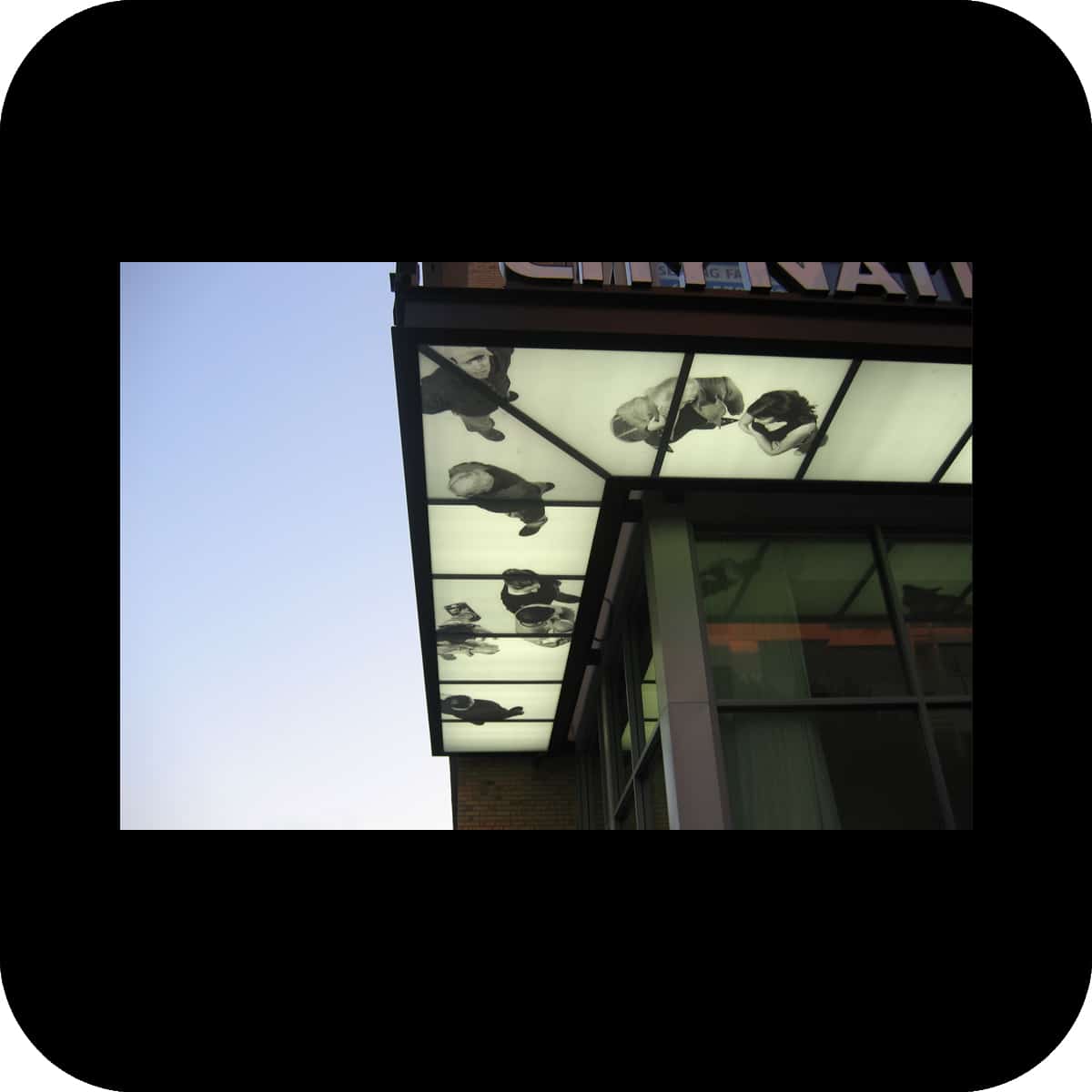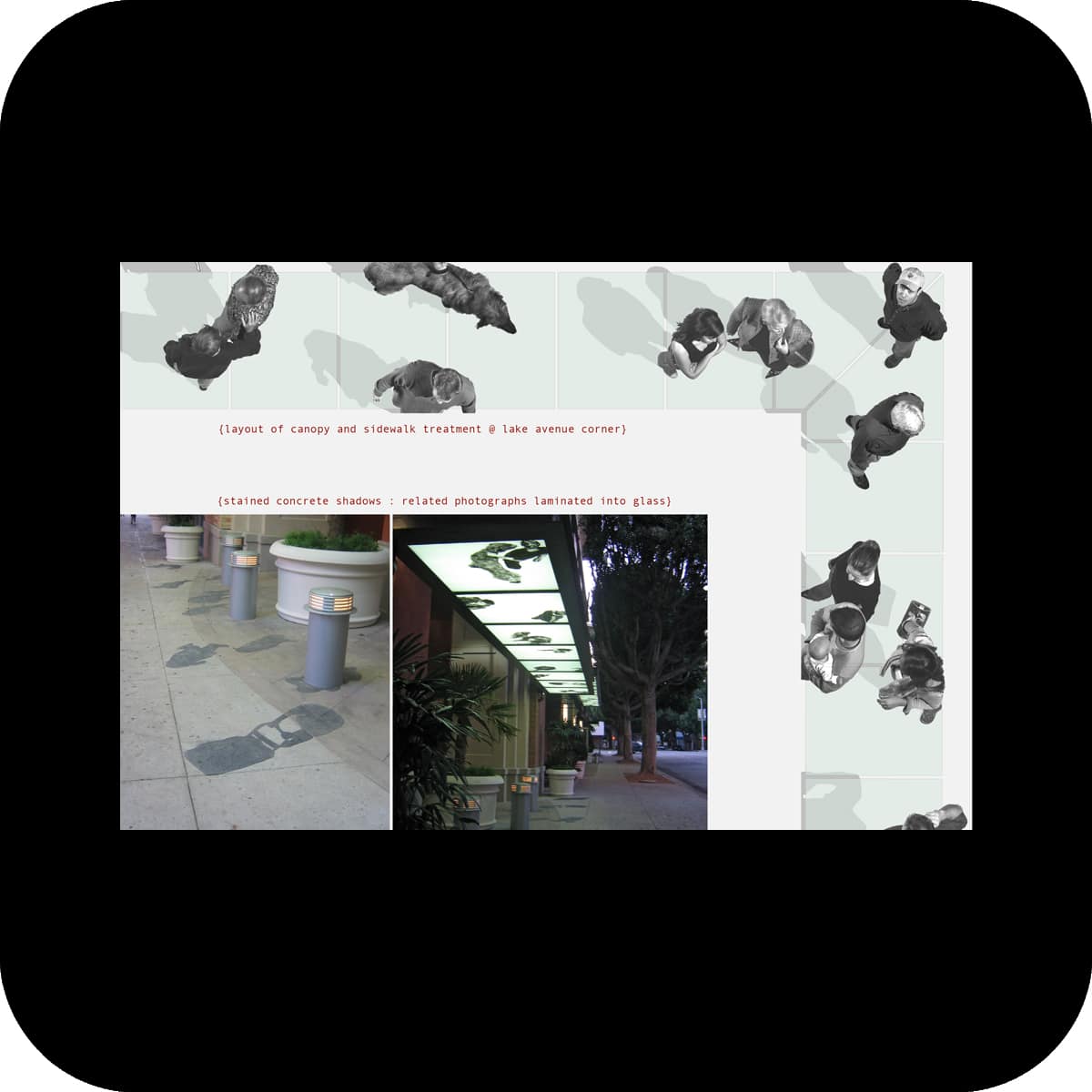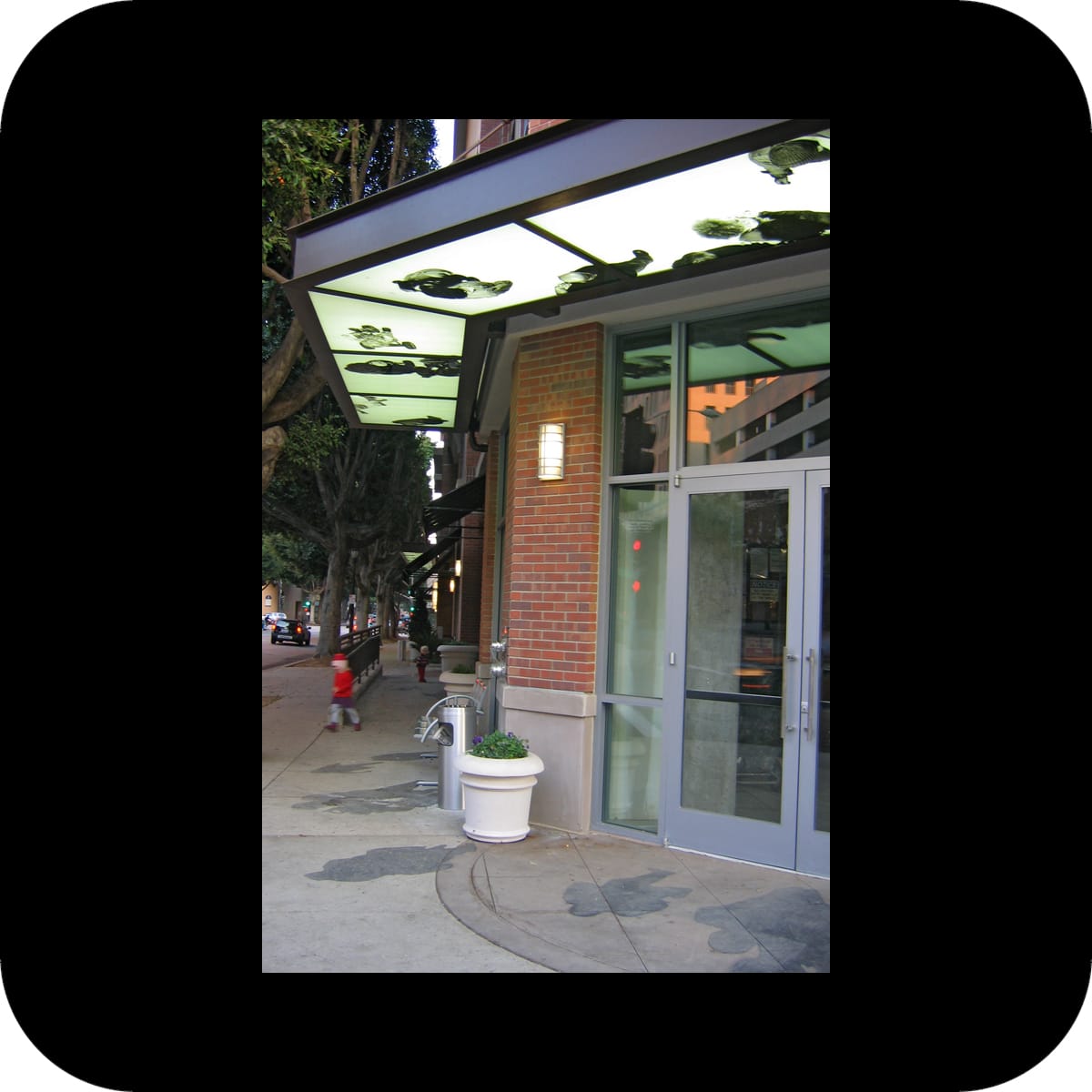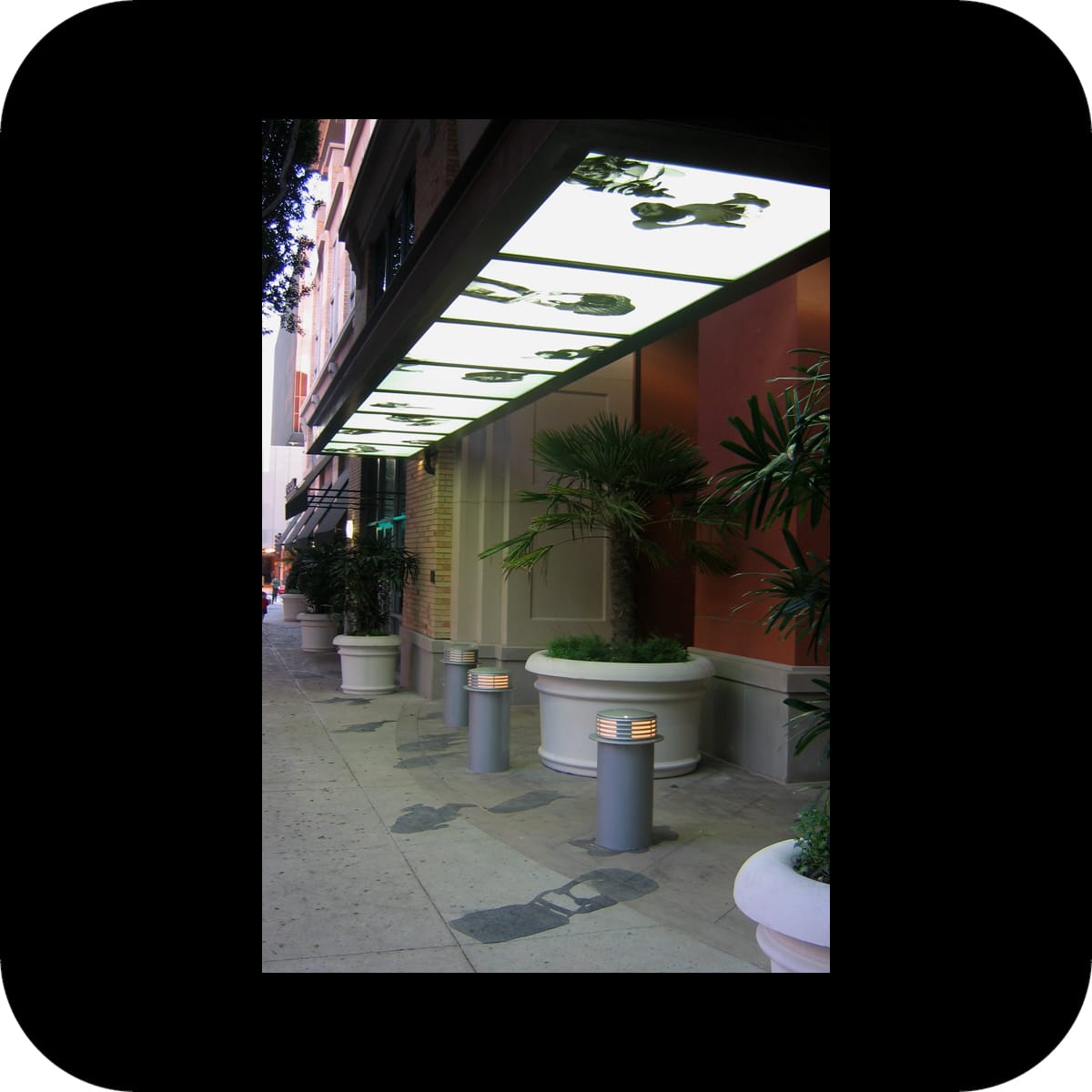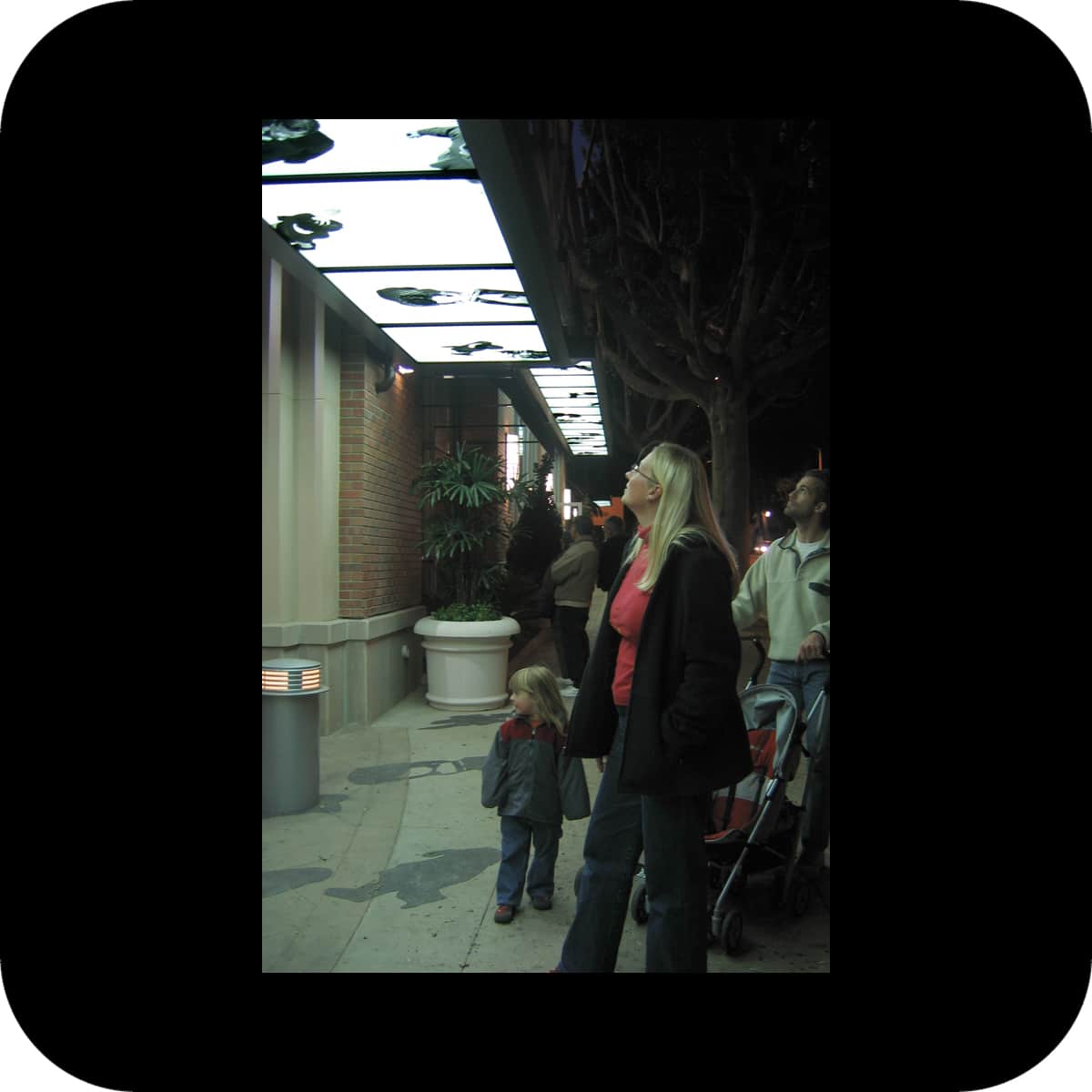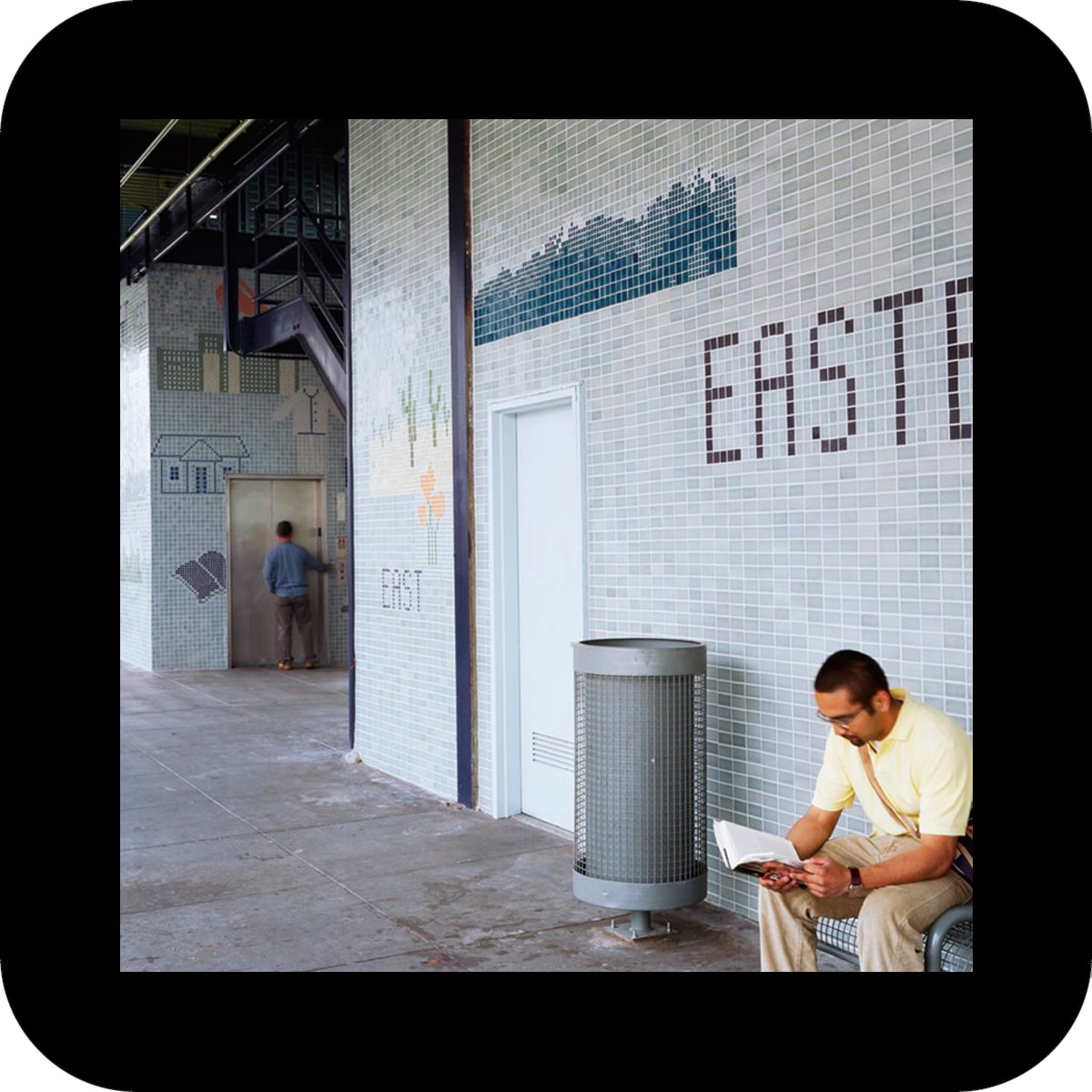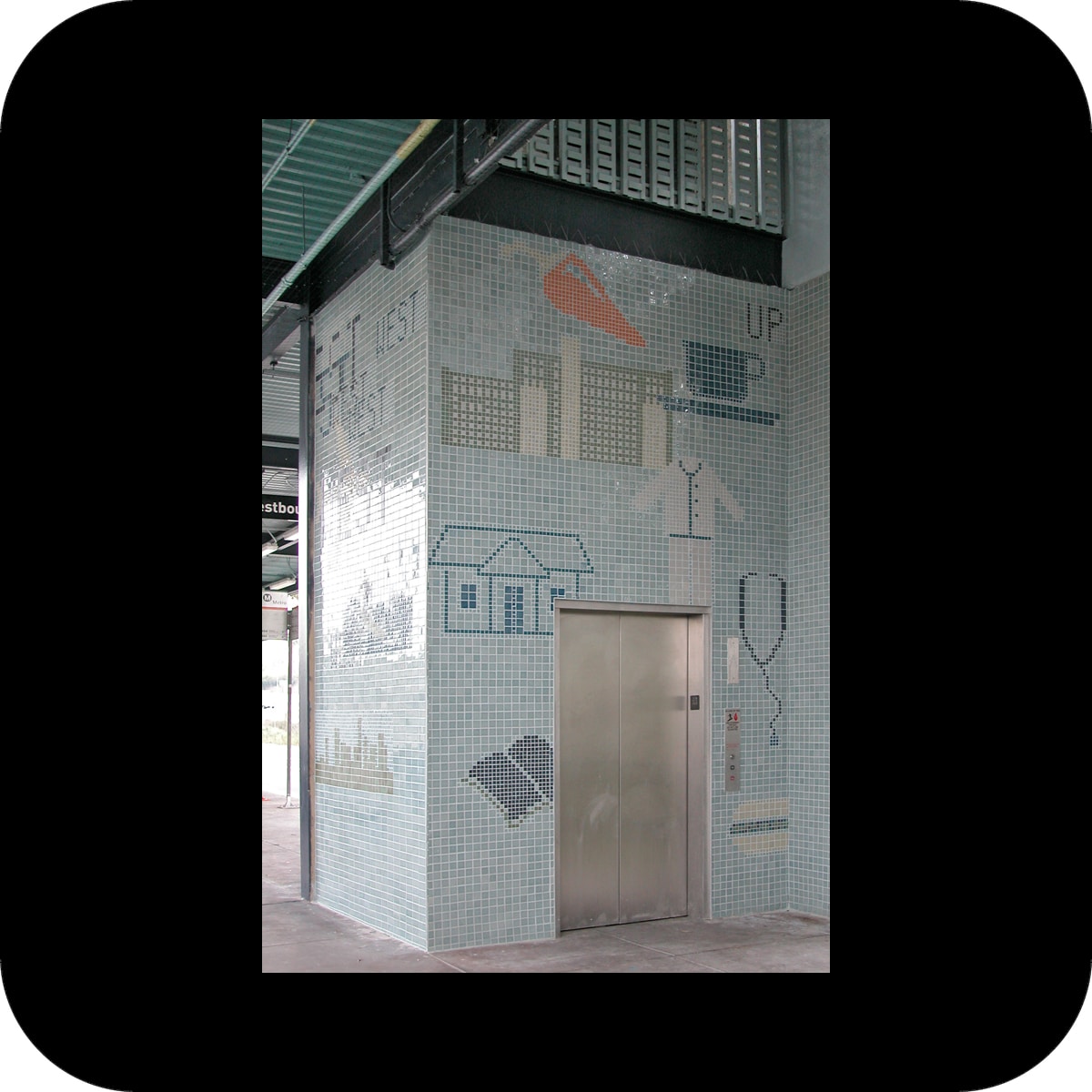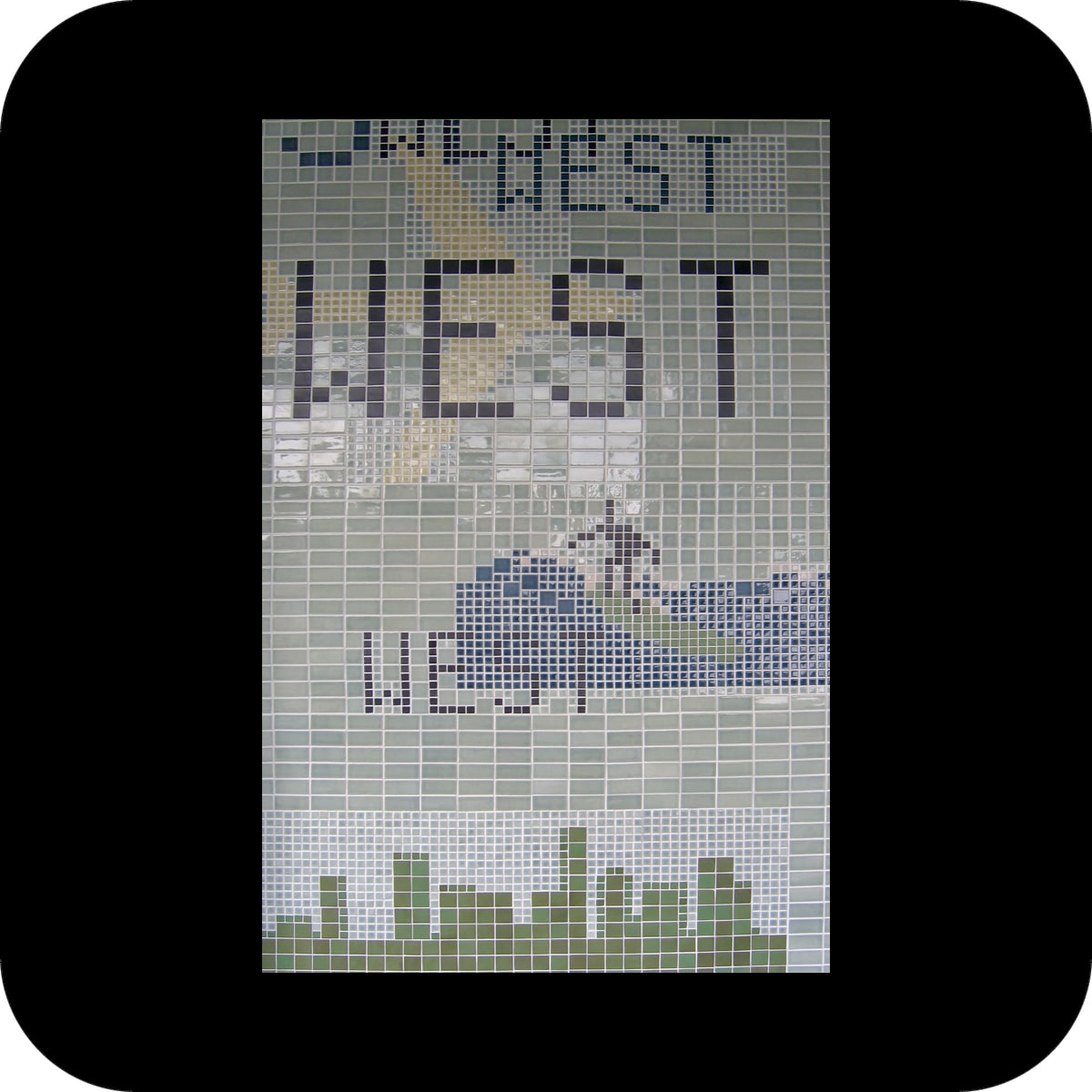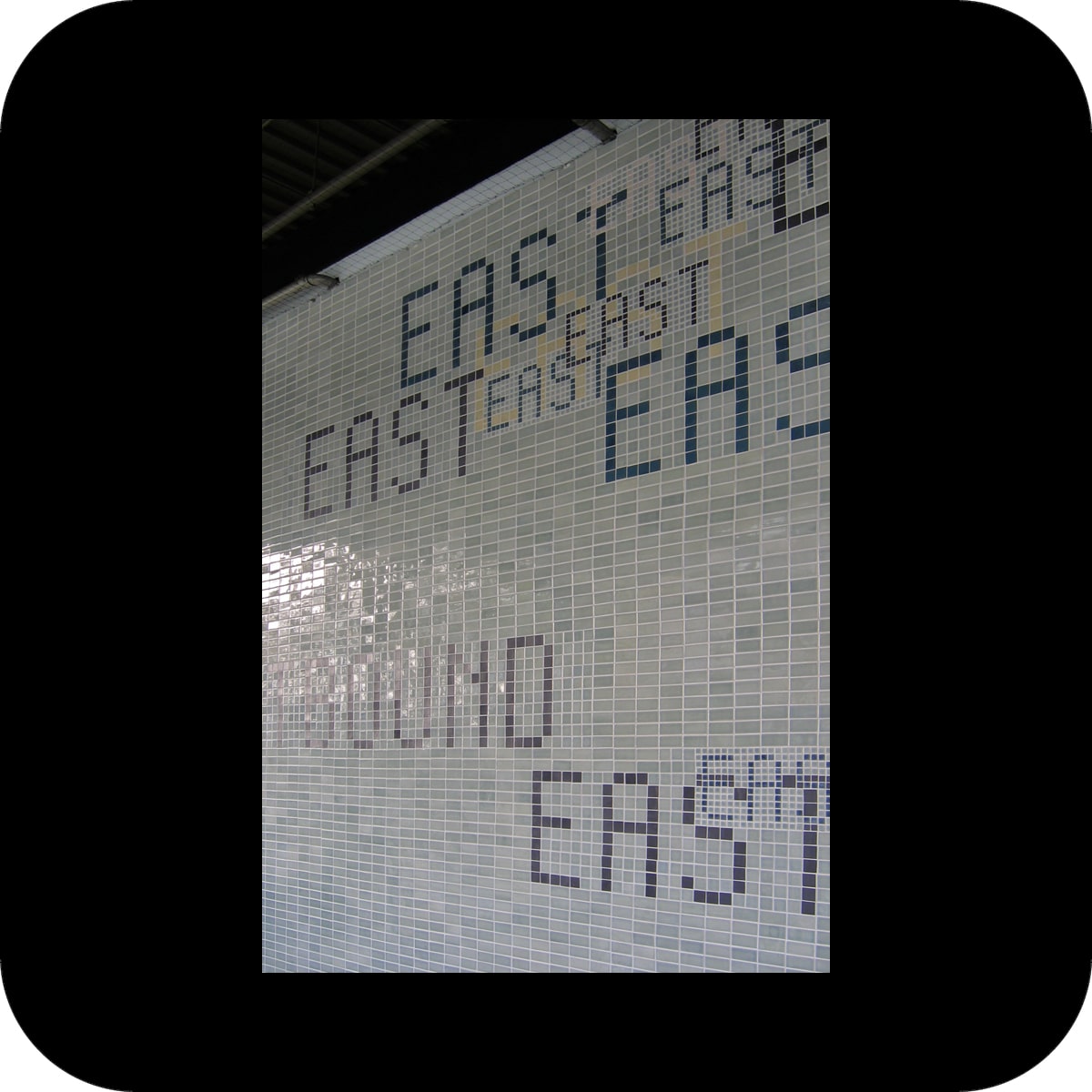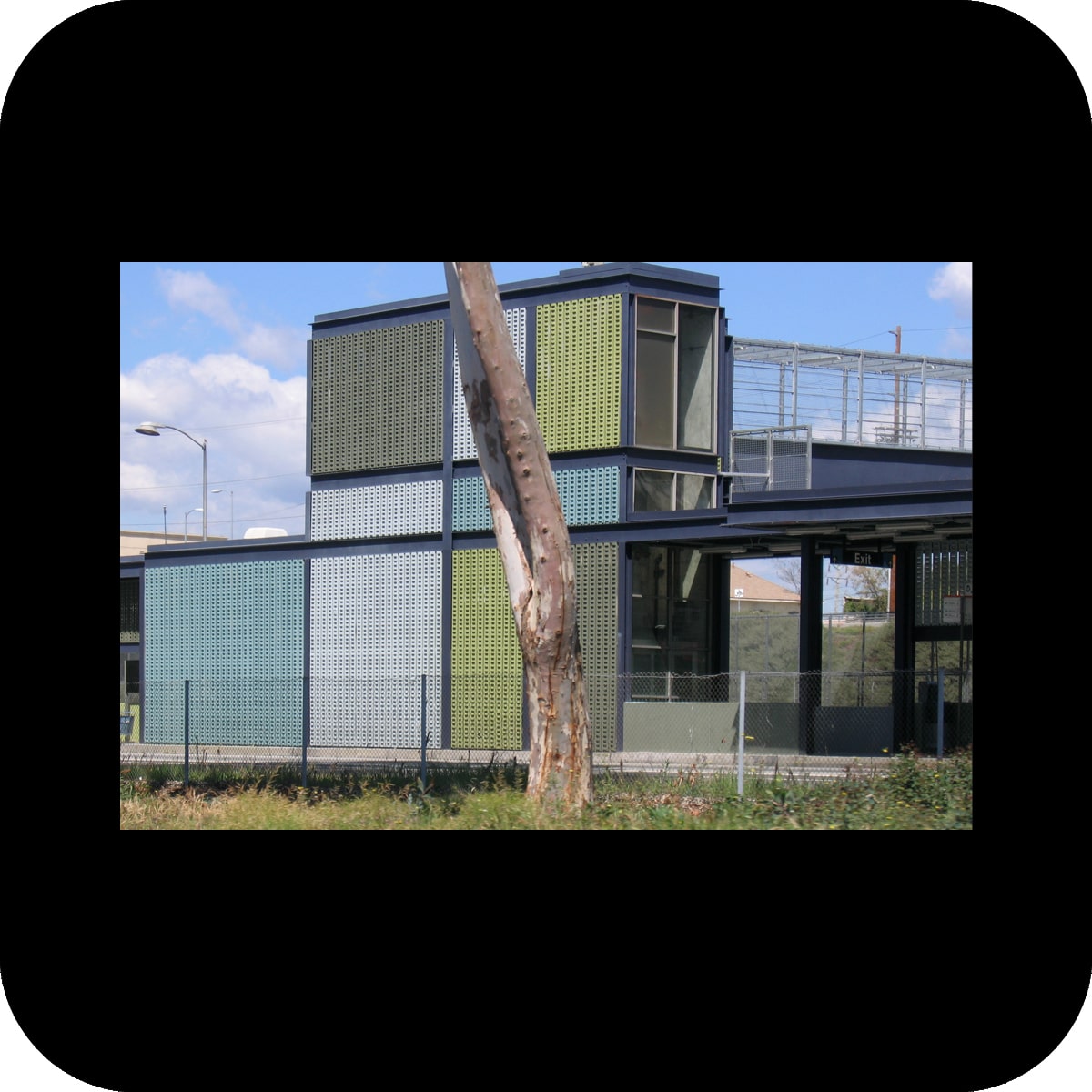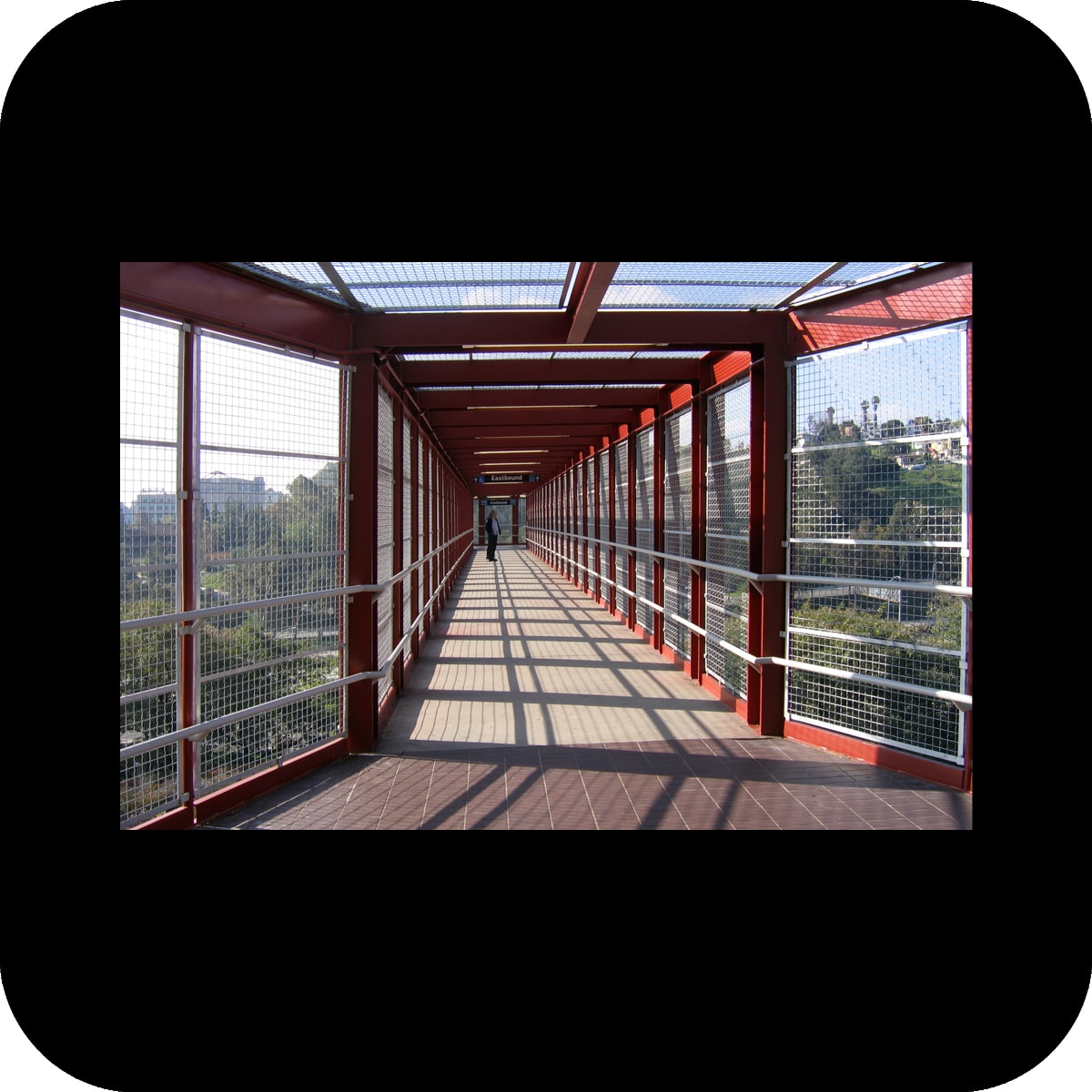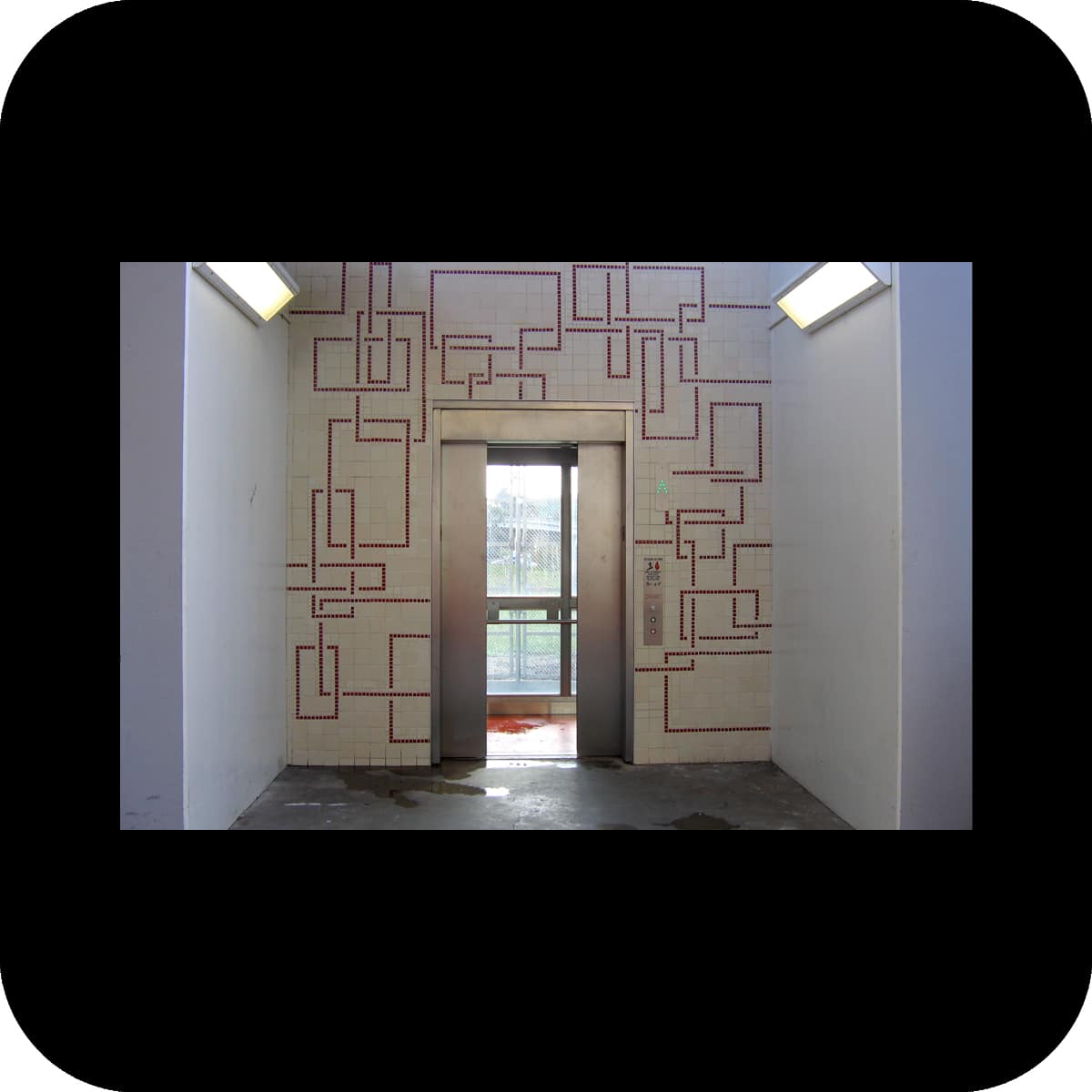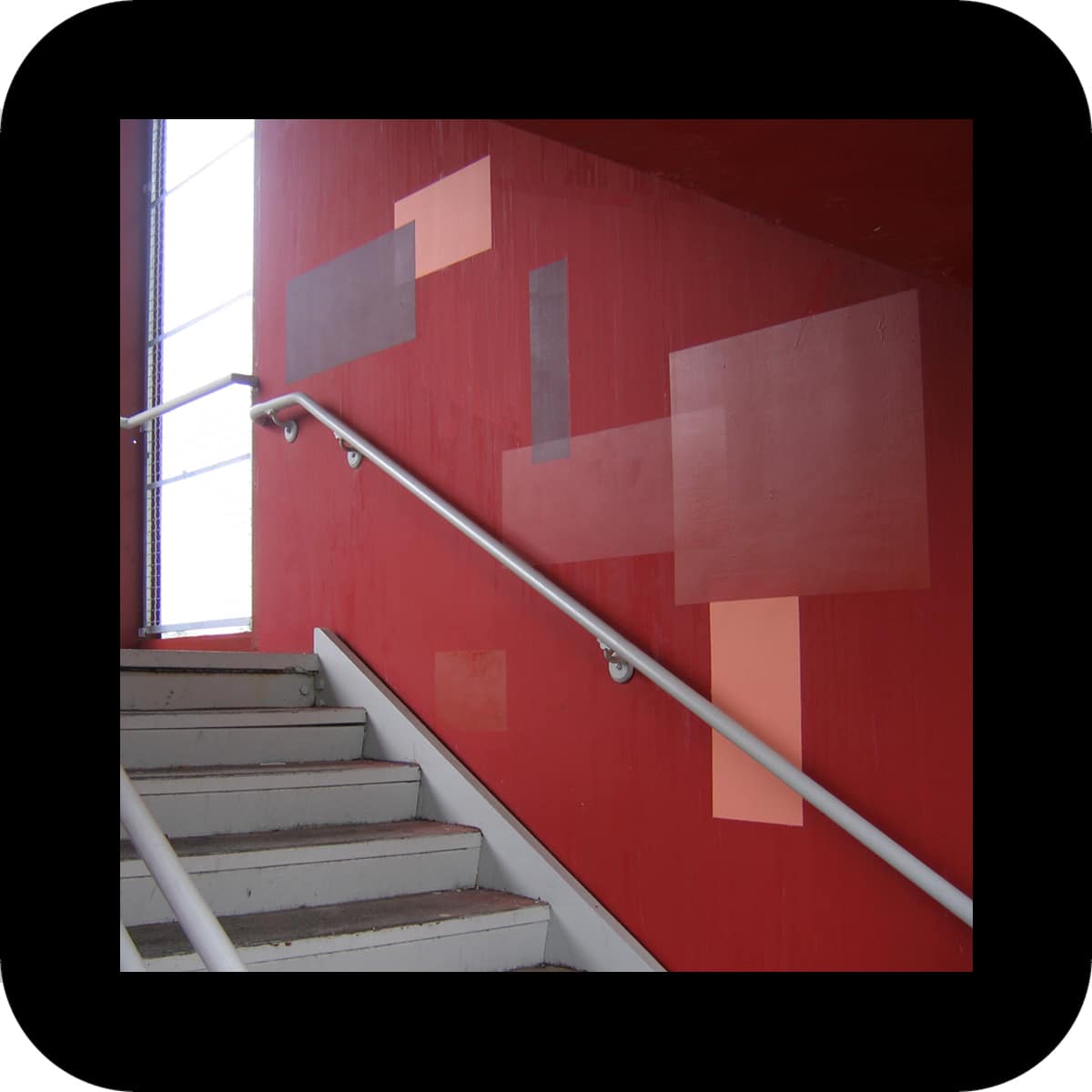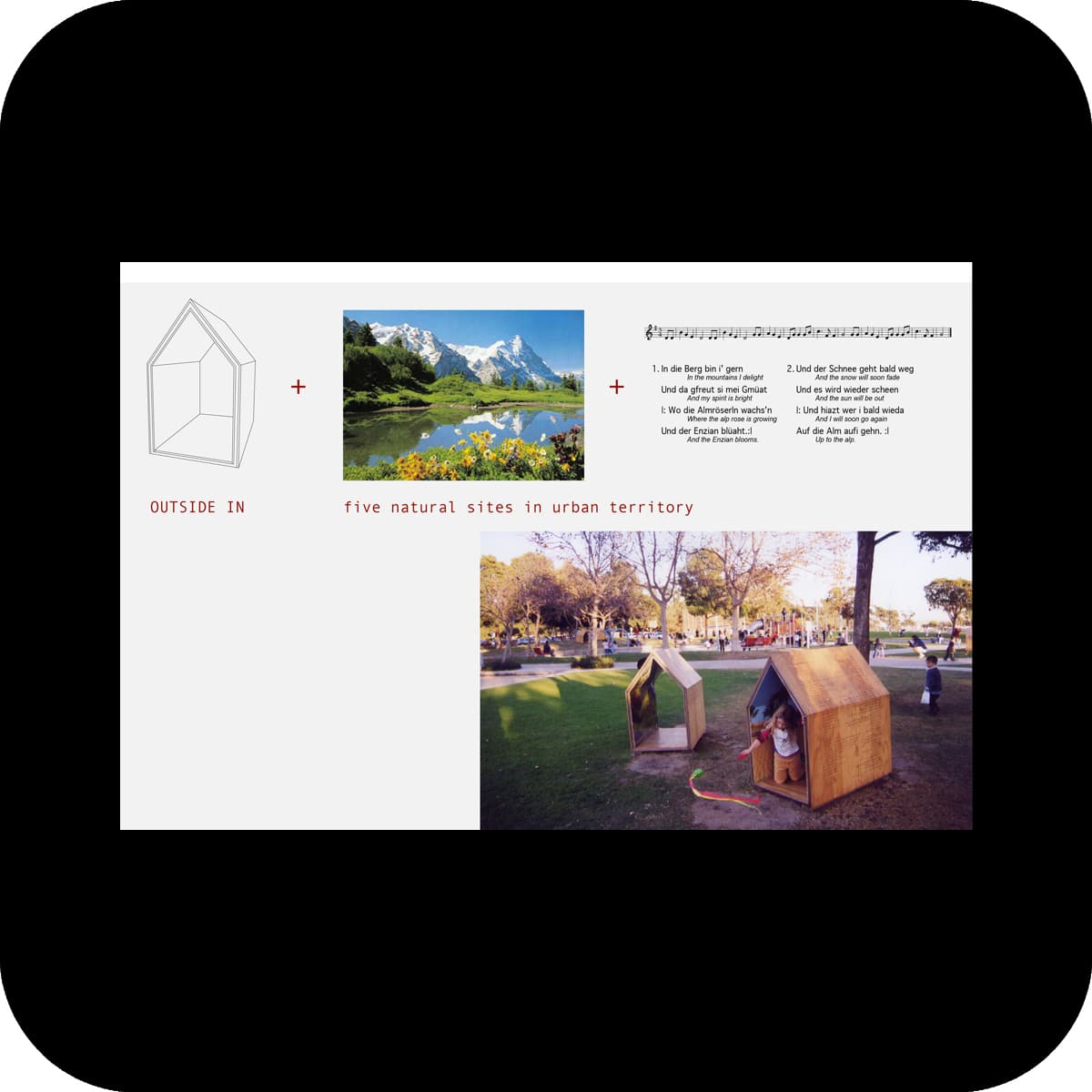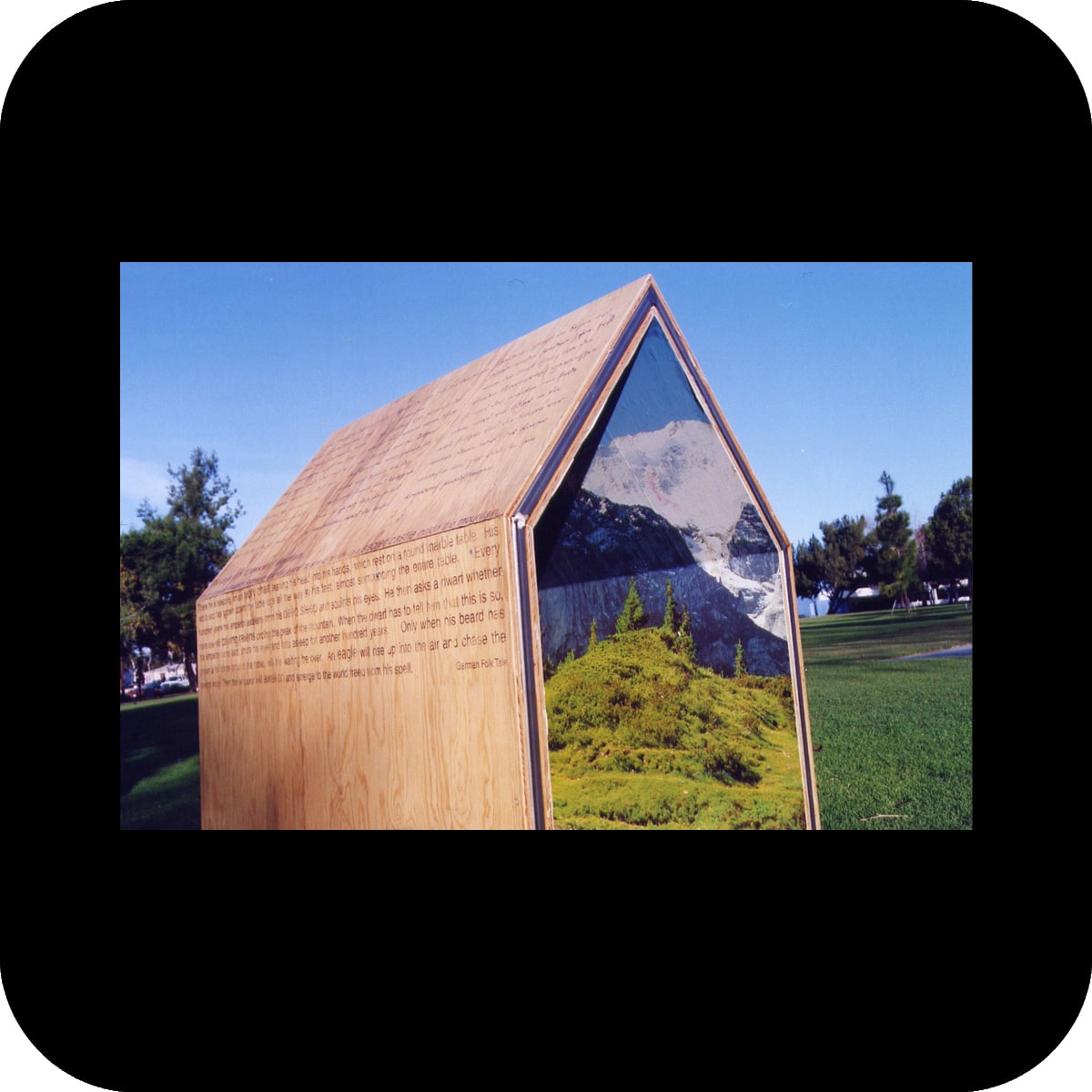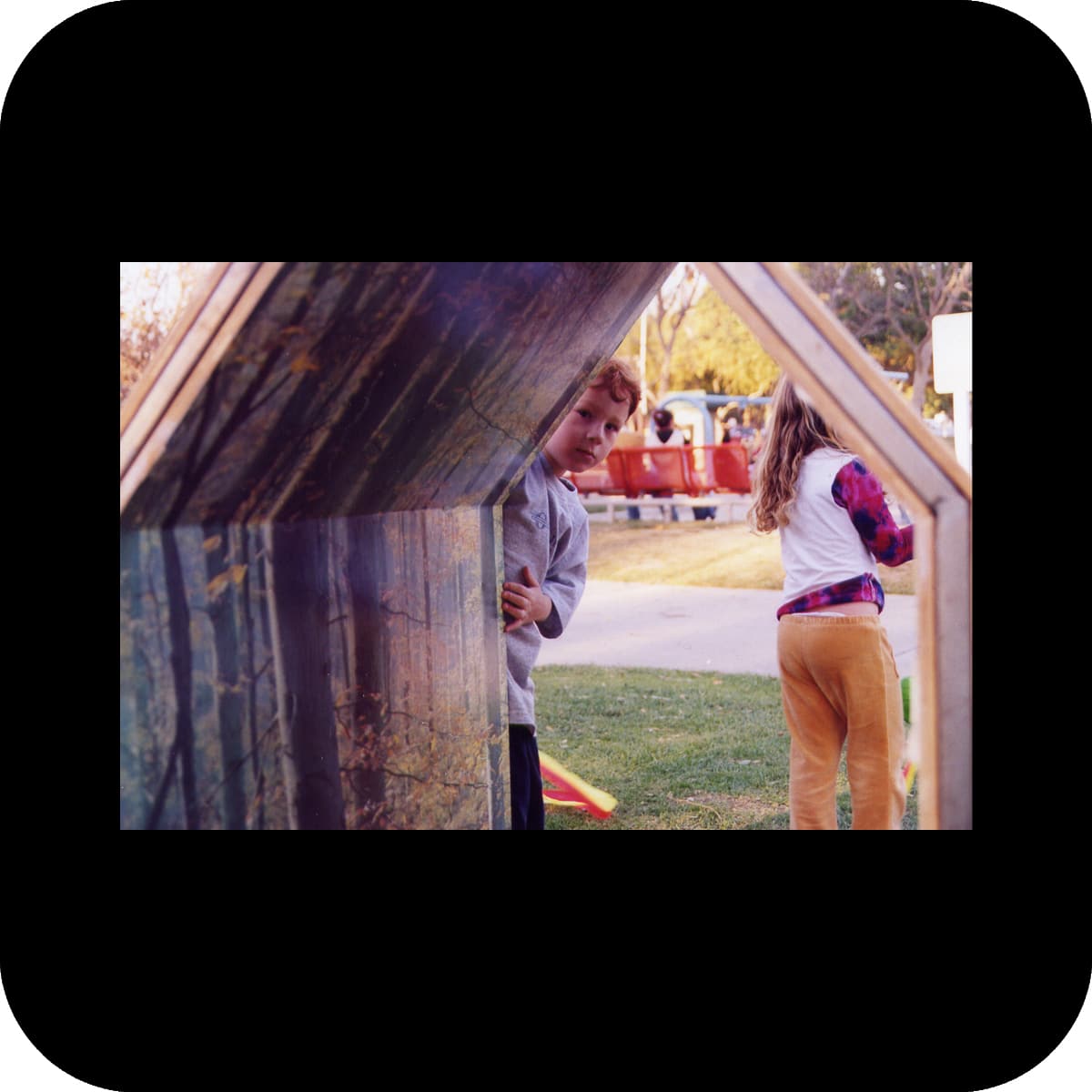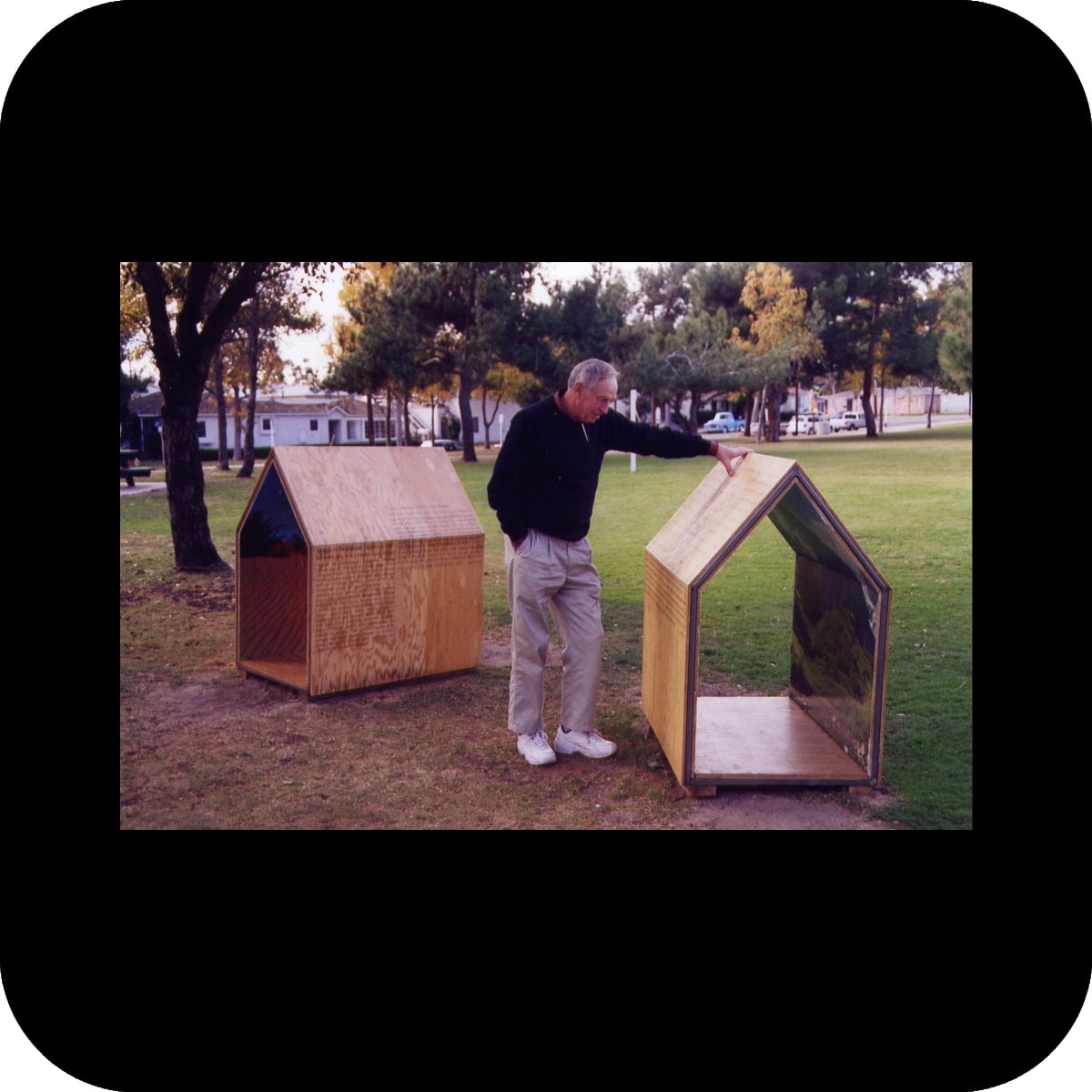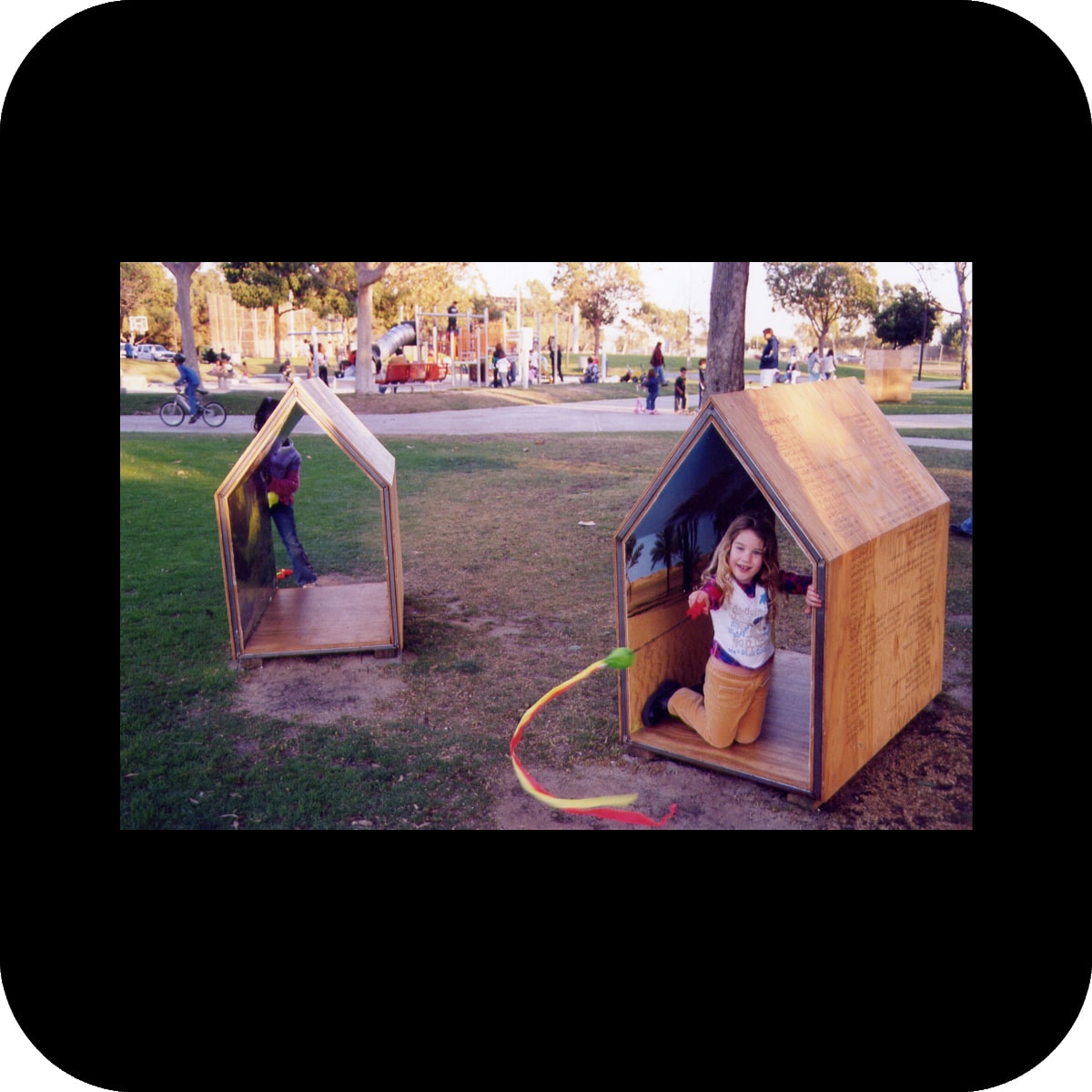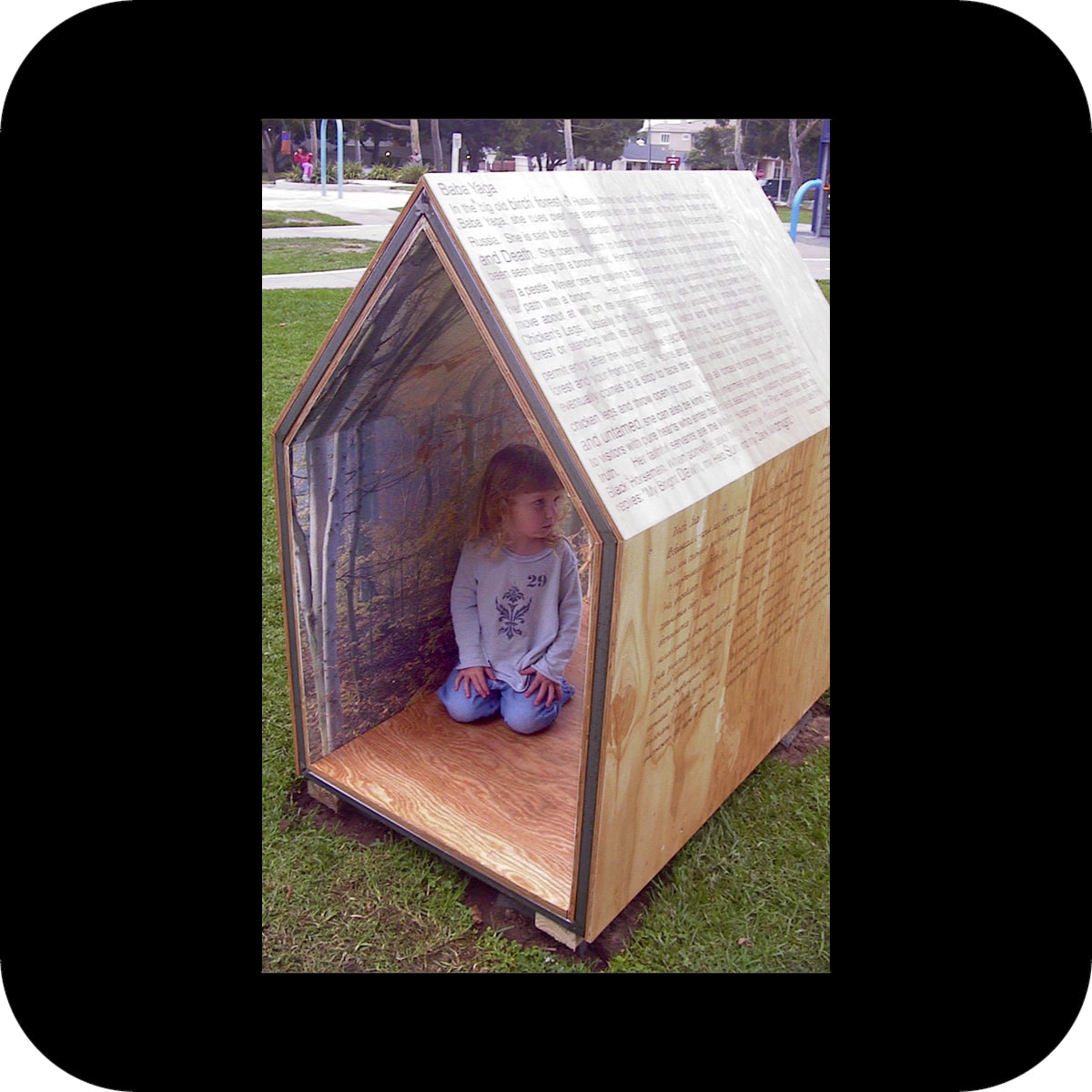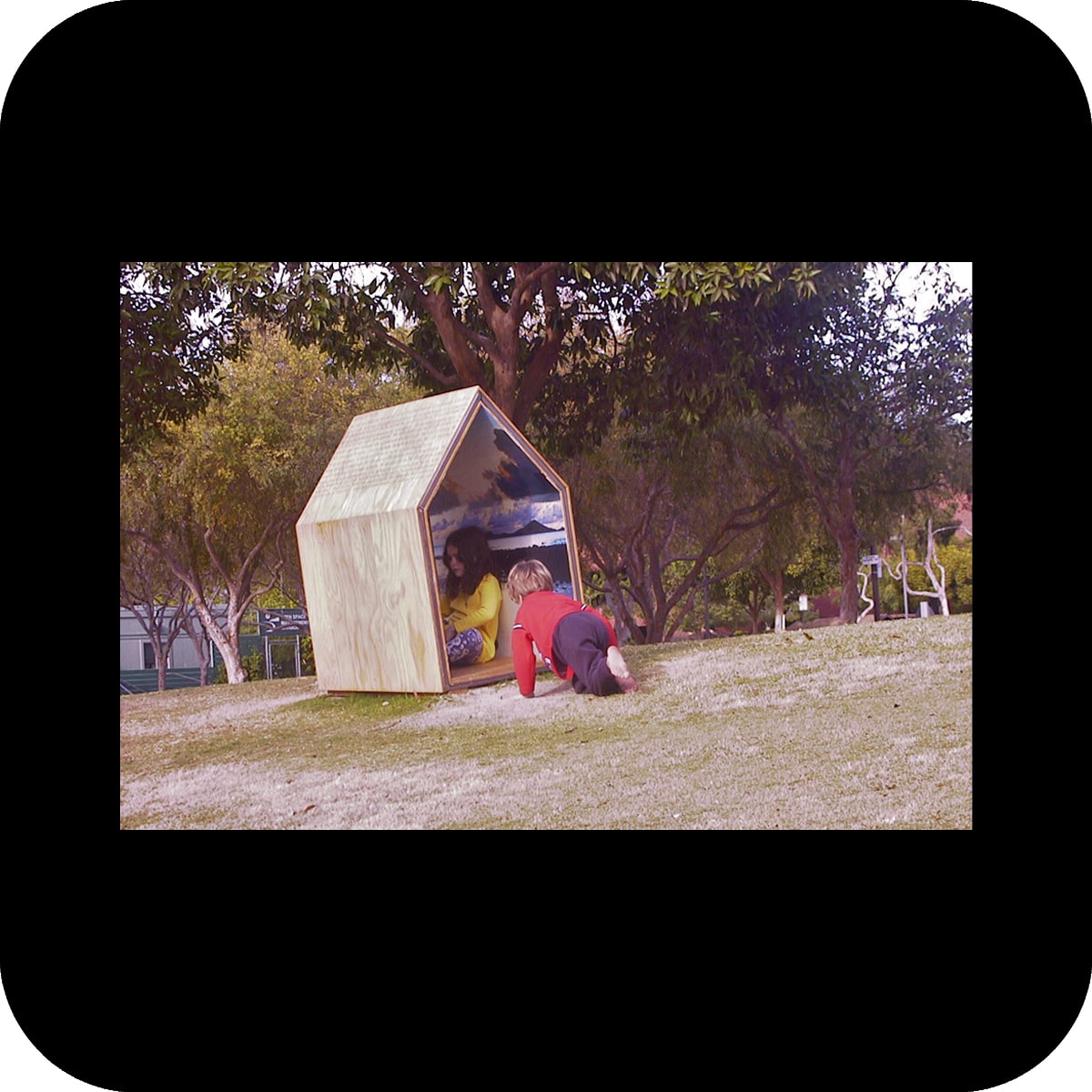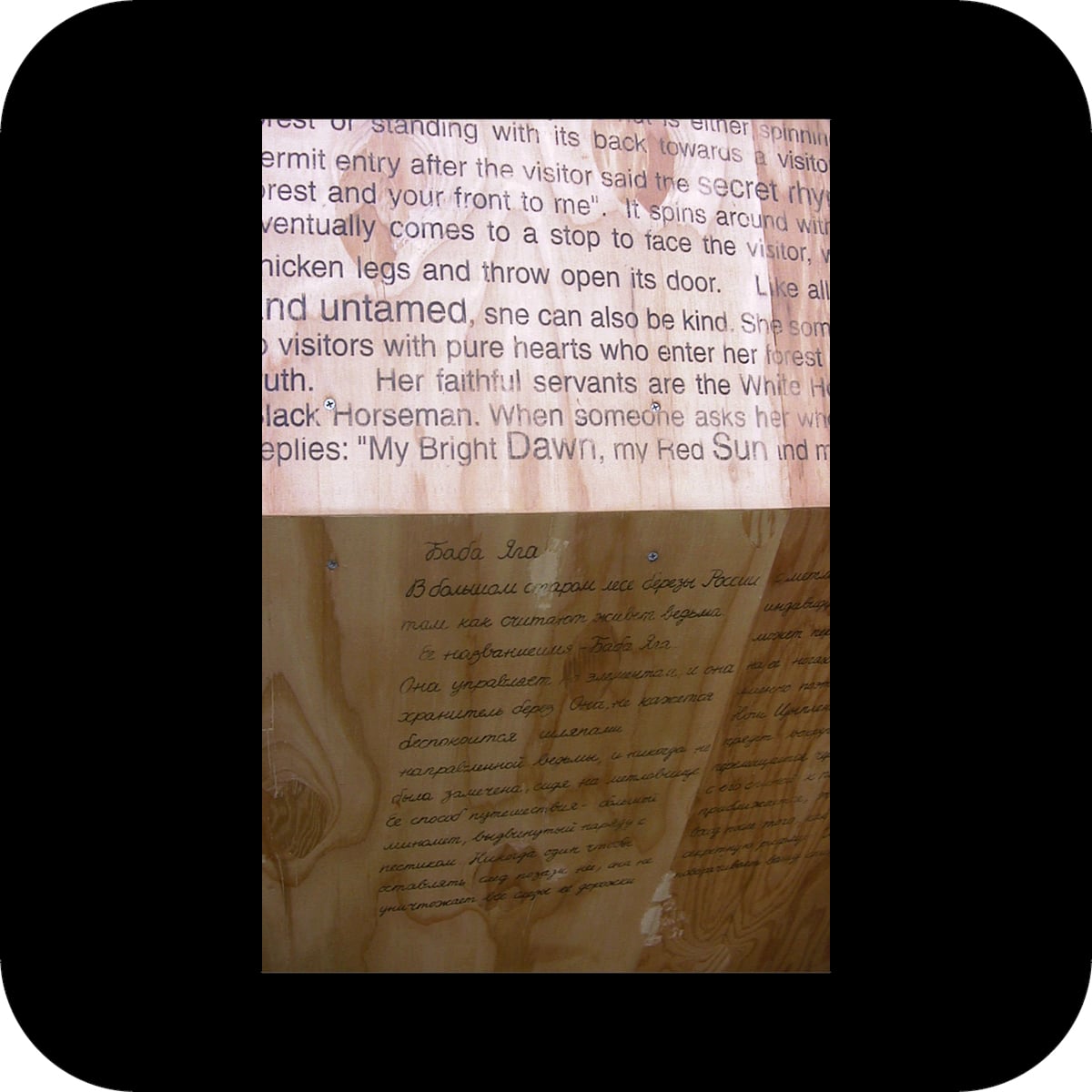ooo
ooo
color and graphic scheme for allen j. martin park, la puente, ca
client: civic art program, los angeles county arts commission
painting contractor: calco painting
stencils: pure black inc
photos: merge
circles form the main motif of our application. the circle conveys a strong meaning beyond cultural barriers – it represents wholeness and unity, and is generally a symbol of life. on a different level circles can evoke playfulness through associations like balloons, bubbles or balls.
background application / canvas:
a random and simple pattern of circles was applied in a variety of densities throughout the park, unifying a number of different elements of architecture and landscape. The circles were painted in bright colors (orange, pink, blue and two greens) that visually interact with each other. the community embraced our effort introducing strong colors to the site, which was formerly characterized by beige and brown hues.
community participation:
after the base layout of the circles was applied we invited the community to attend a workshop about colors: we explored the history, meaning and symbolism of specific colors. we consequently produced stencils that represented objects associated with a specific color (i.e. a basketball for the color orange). on the following “color day” the community was invited to use the provided stencils to paint with various shades and tints of the appropriate color on any circle that matched their color. by receiving information combined with hands-on work with colors participants acquired a deeper understanding and appreciation for colors and art. the participation project was fun and educational for both us and the public, and increased the community’s identification with the site.
the project has significantly reduced the graffiti problem at the park. smaller circular stencils are being used by the park staff for continuous graffiti management when necessary. the circular pattern thus intensifies over time.
the success of this project has inspired la county to include artists in many more of their facilities renovation projects.
